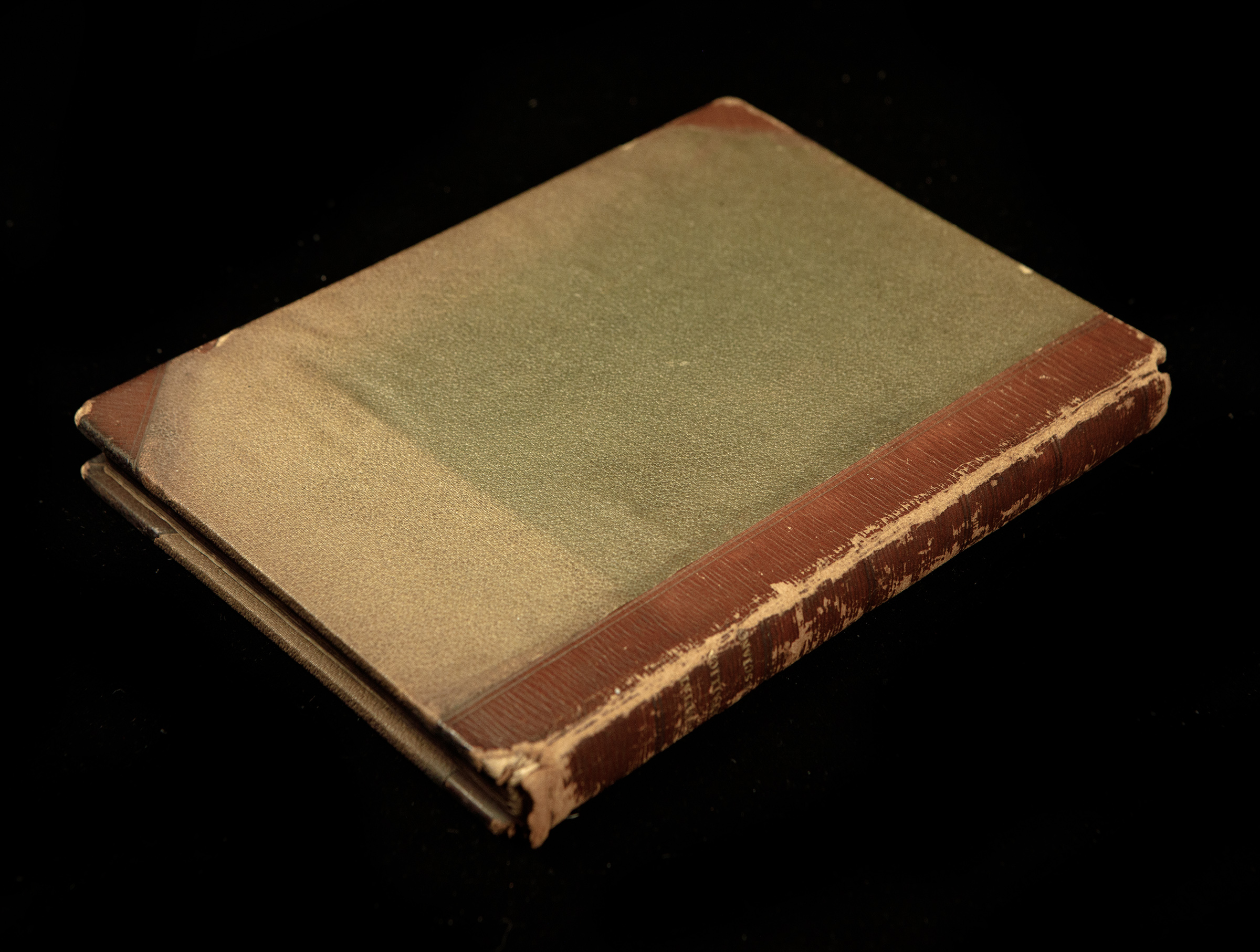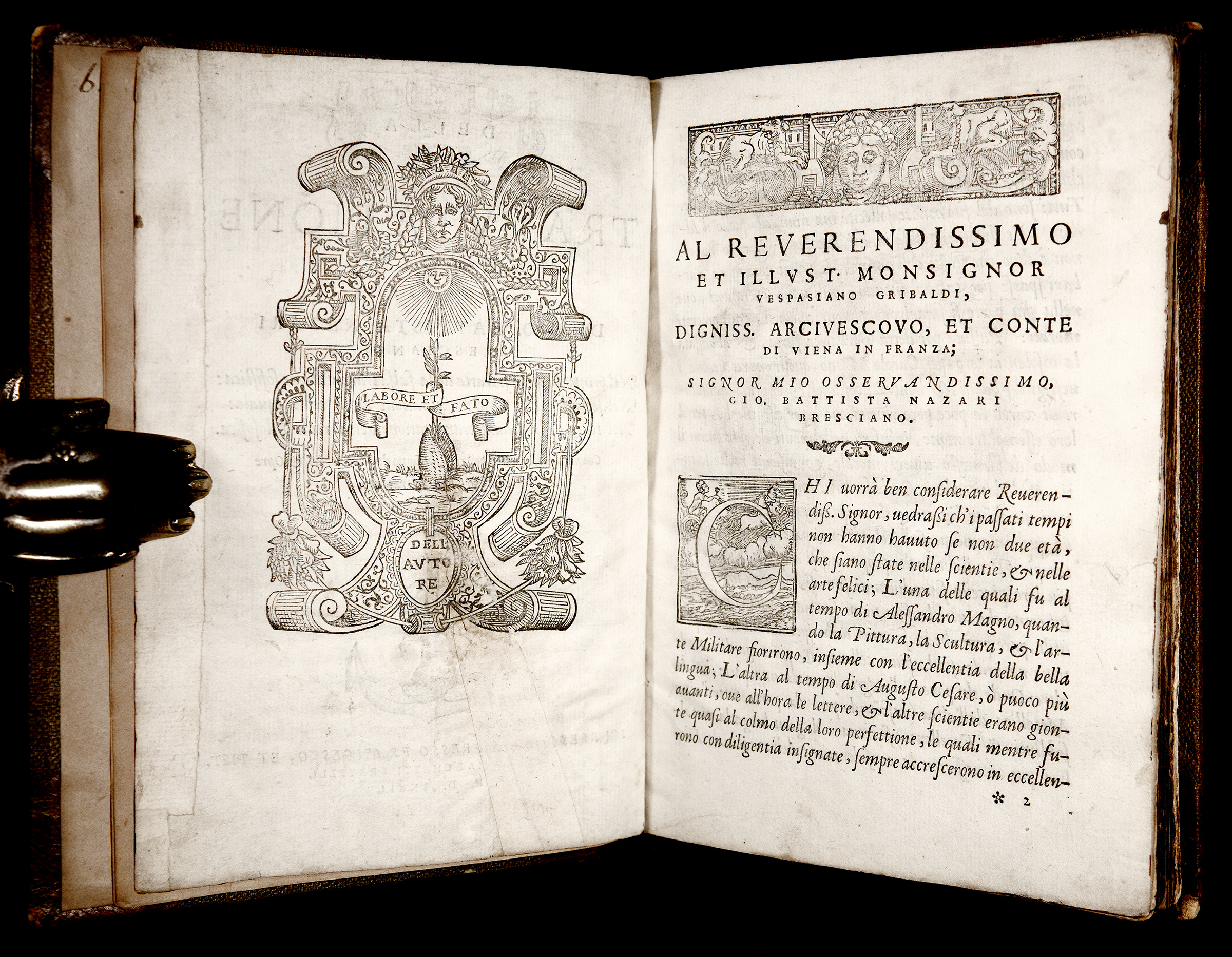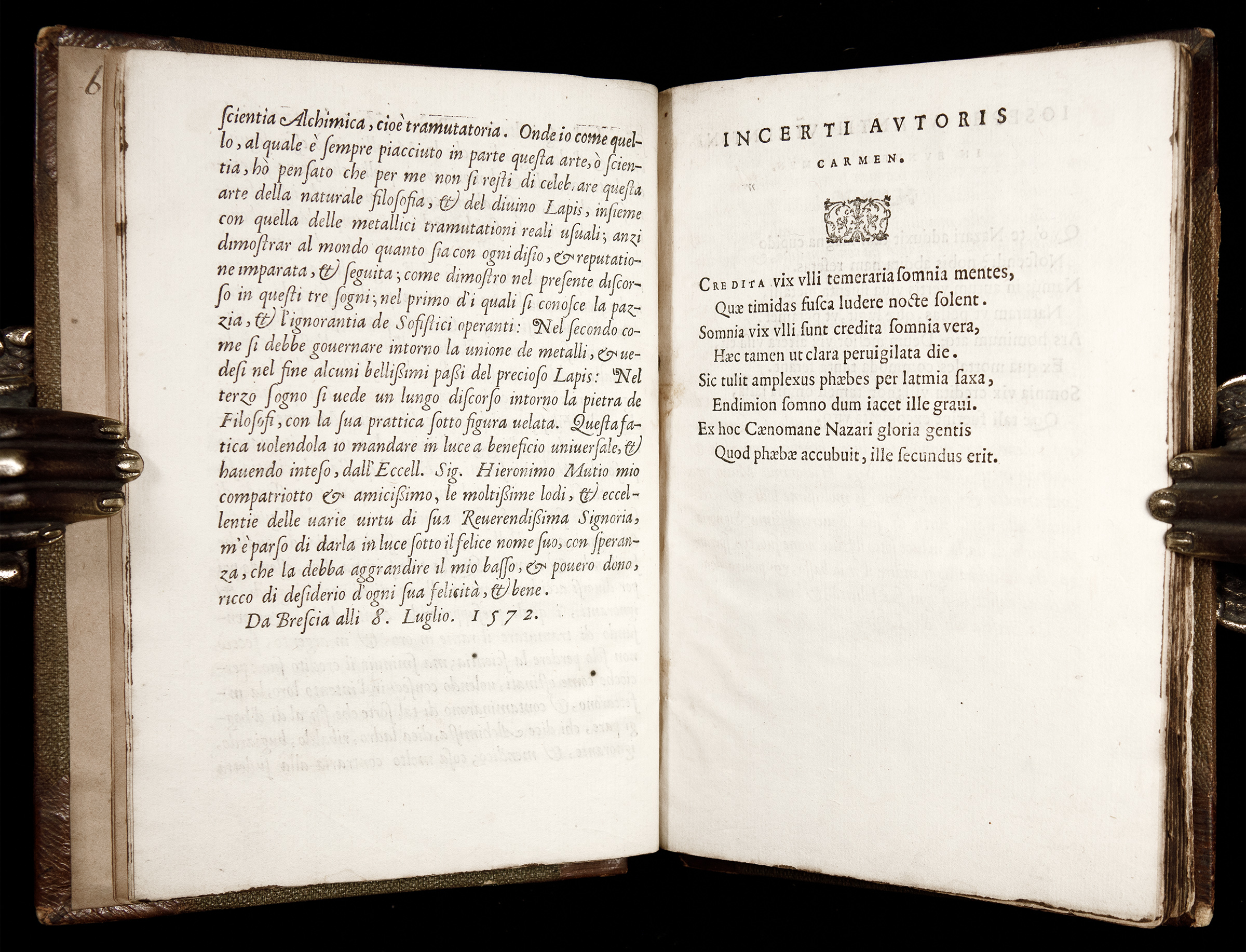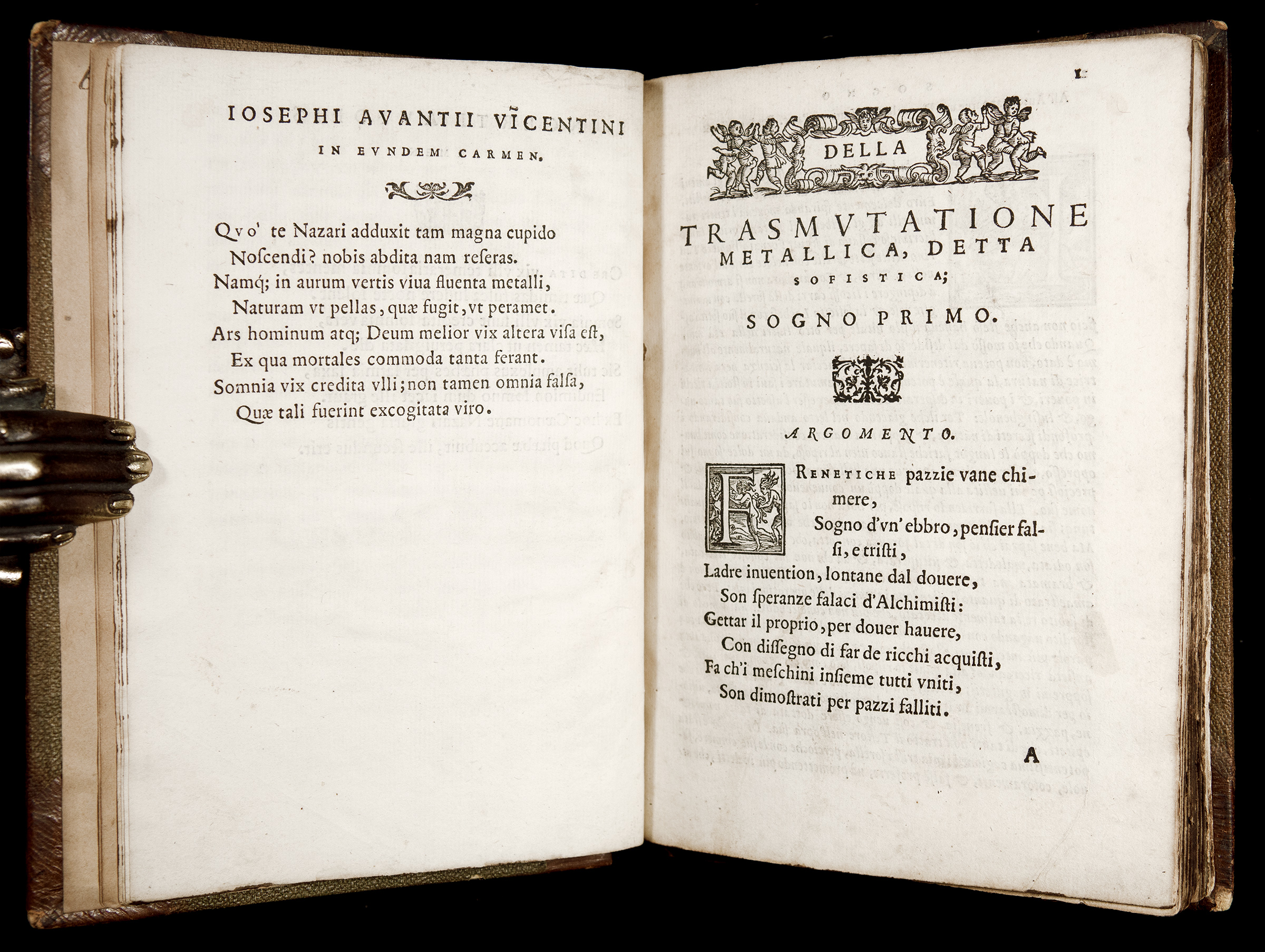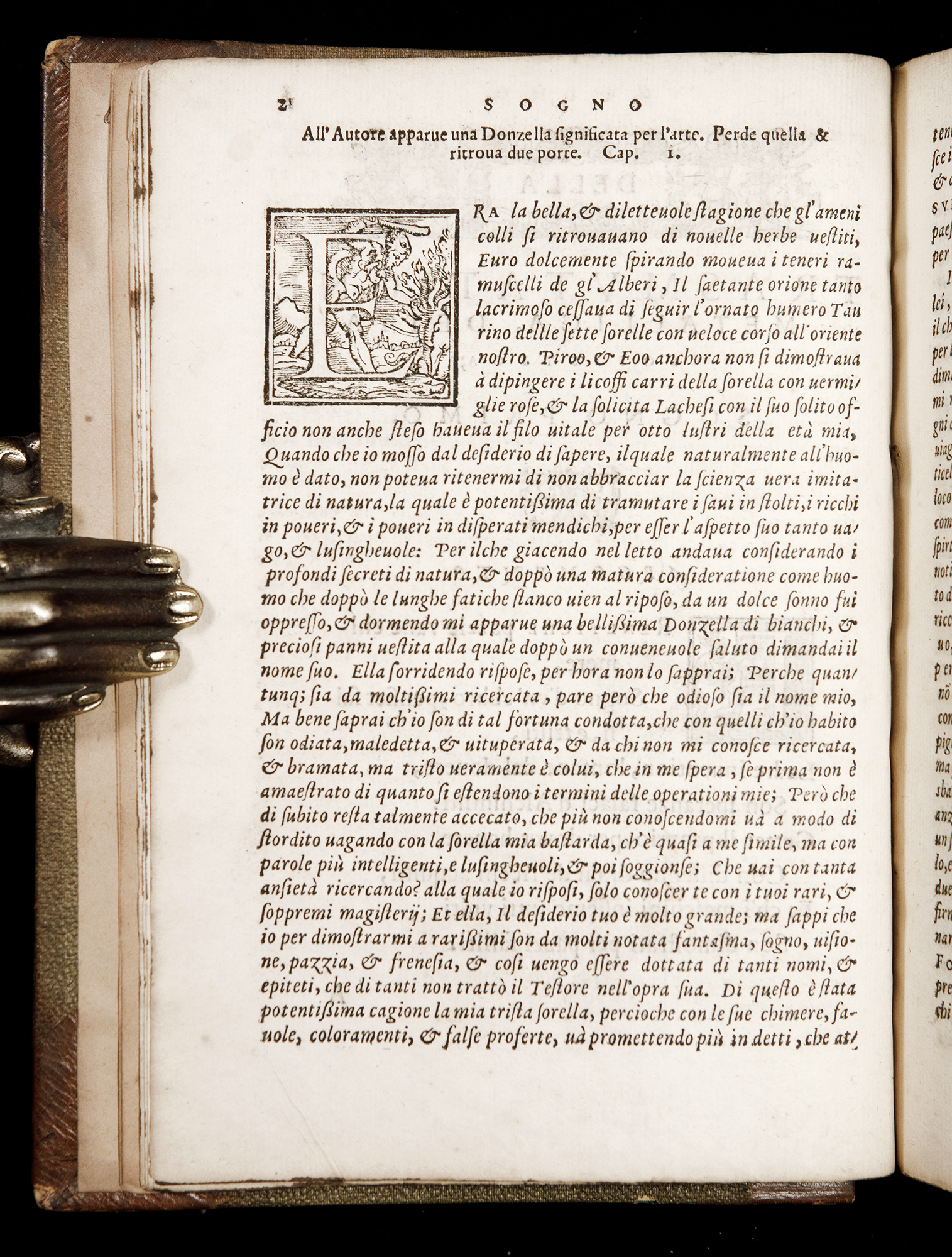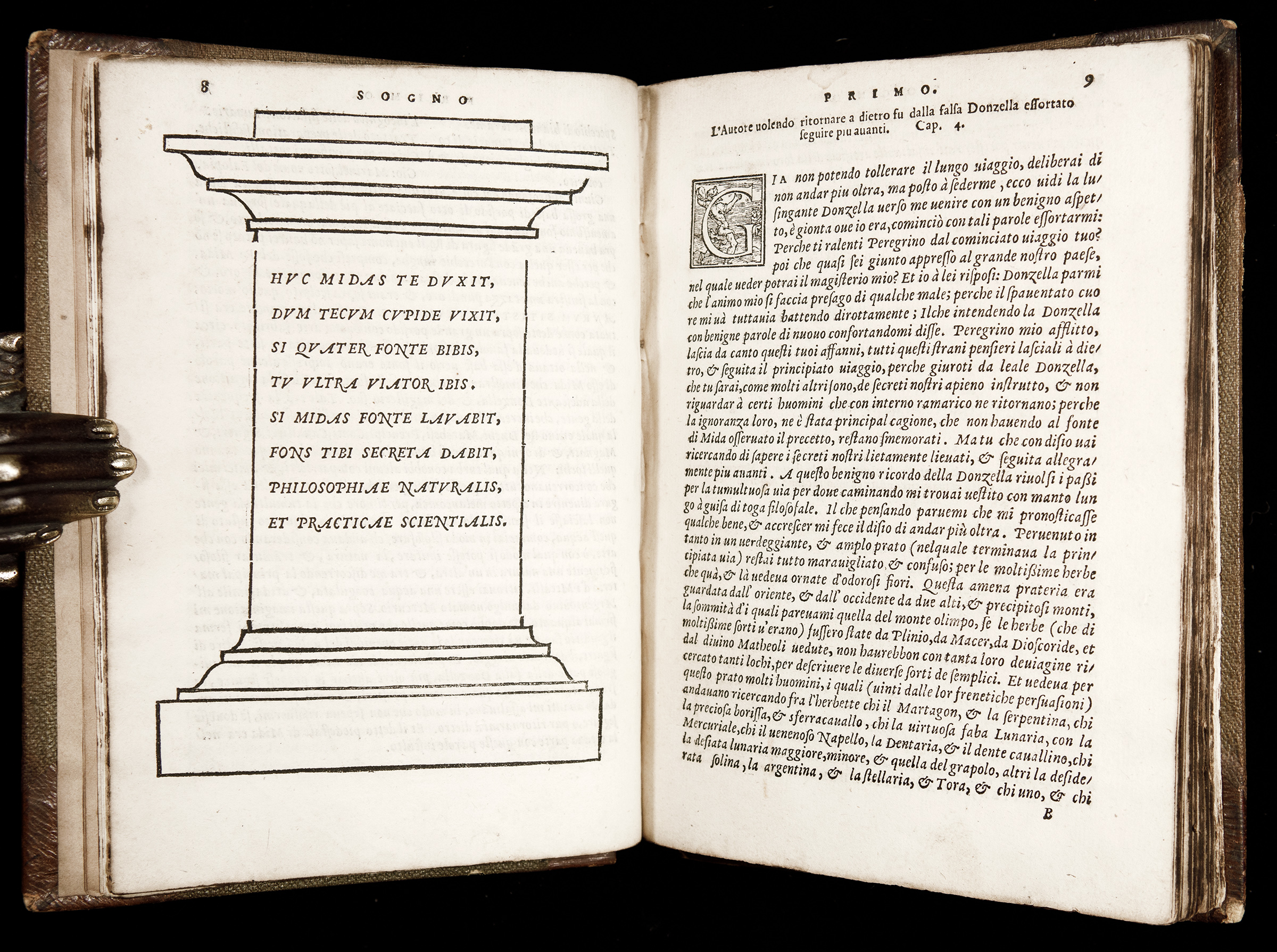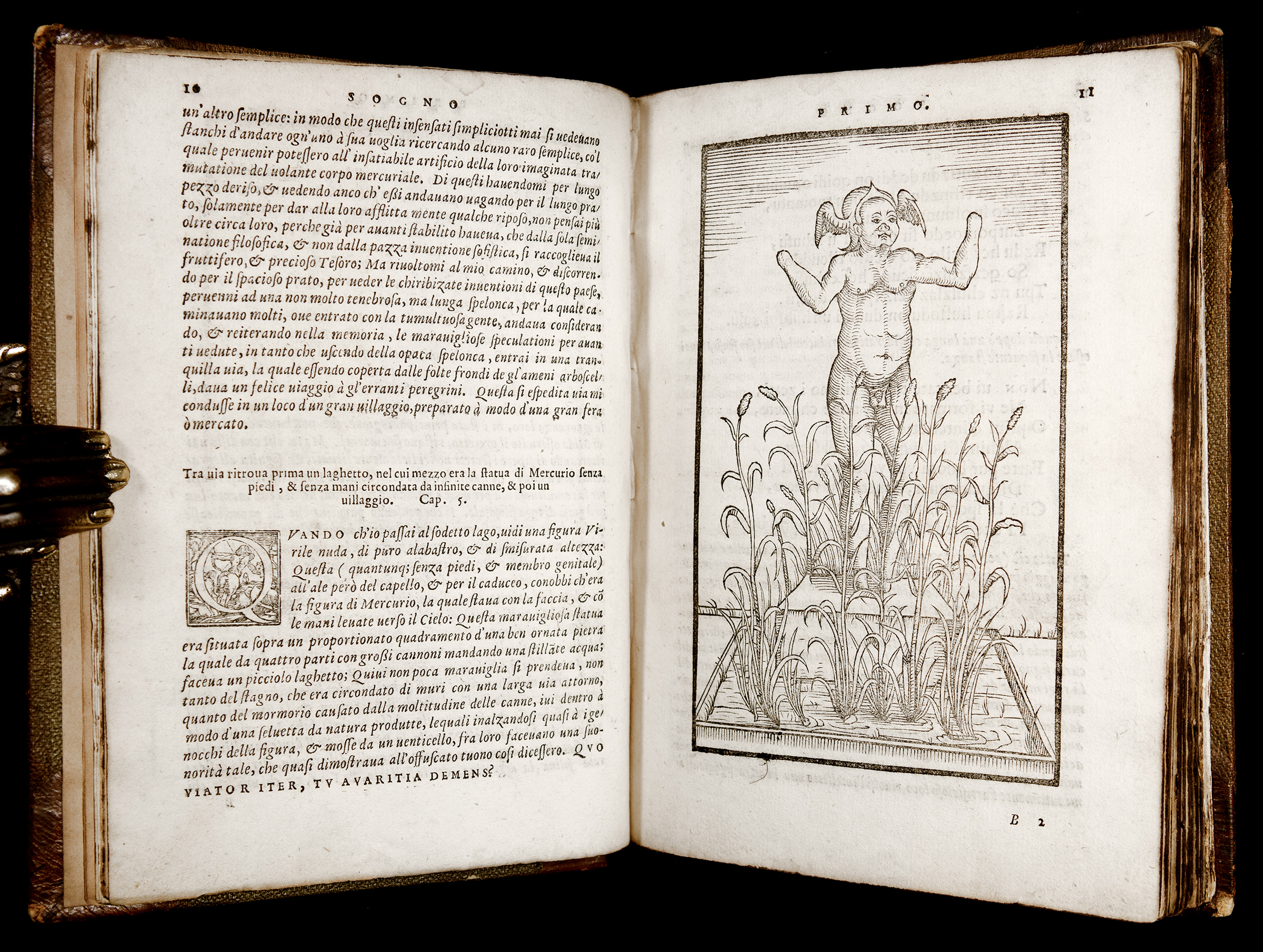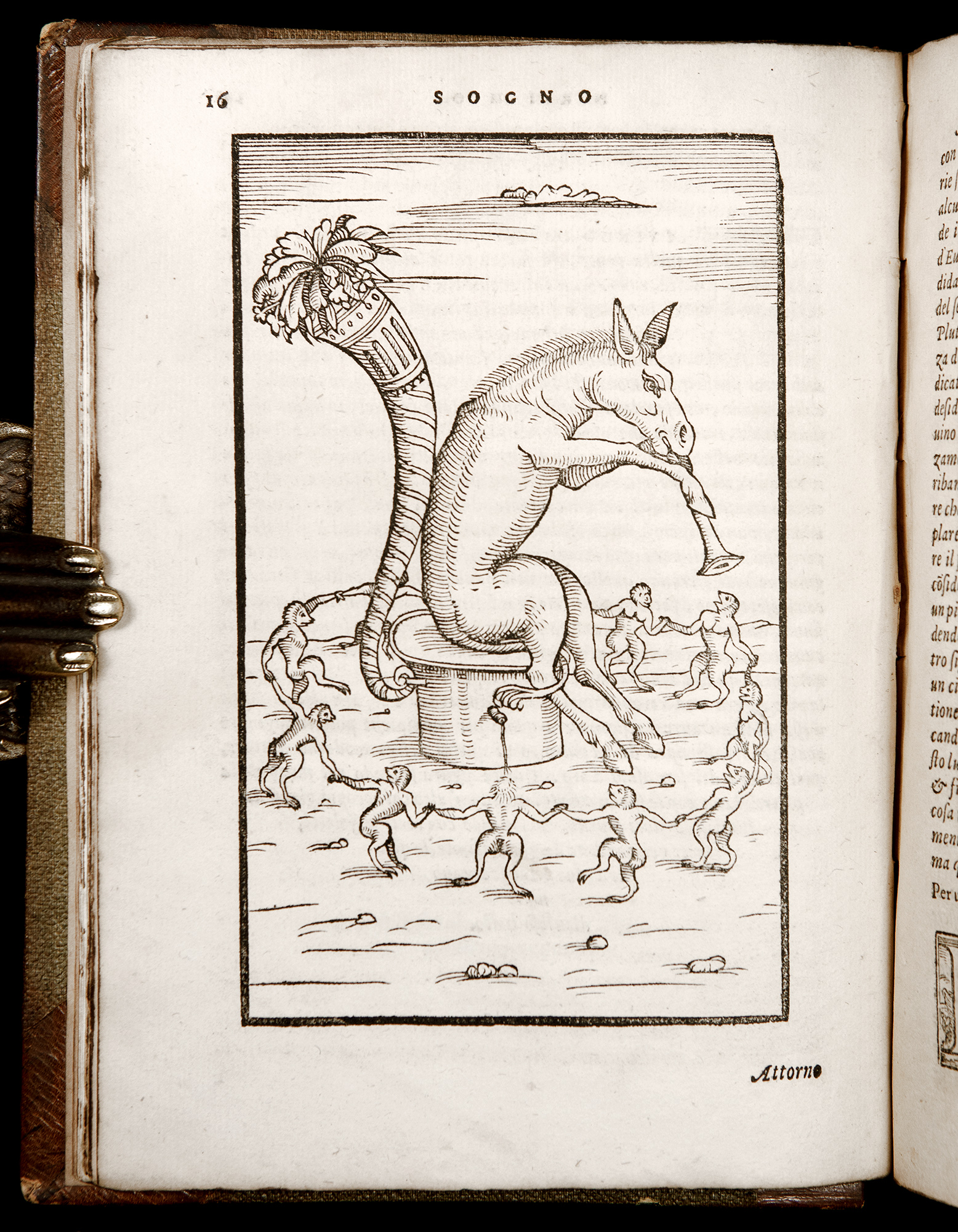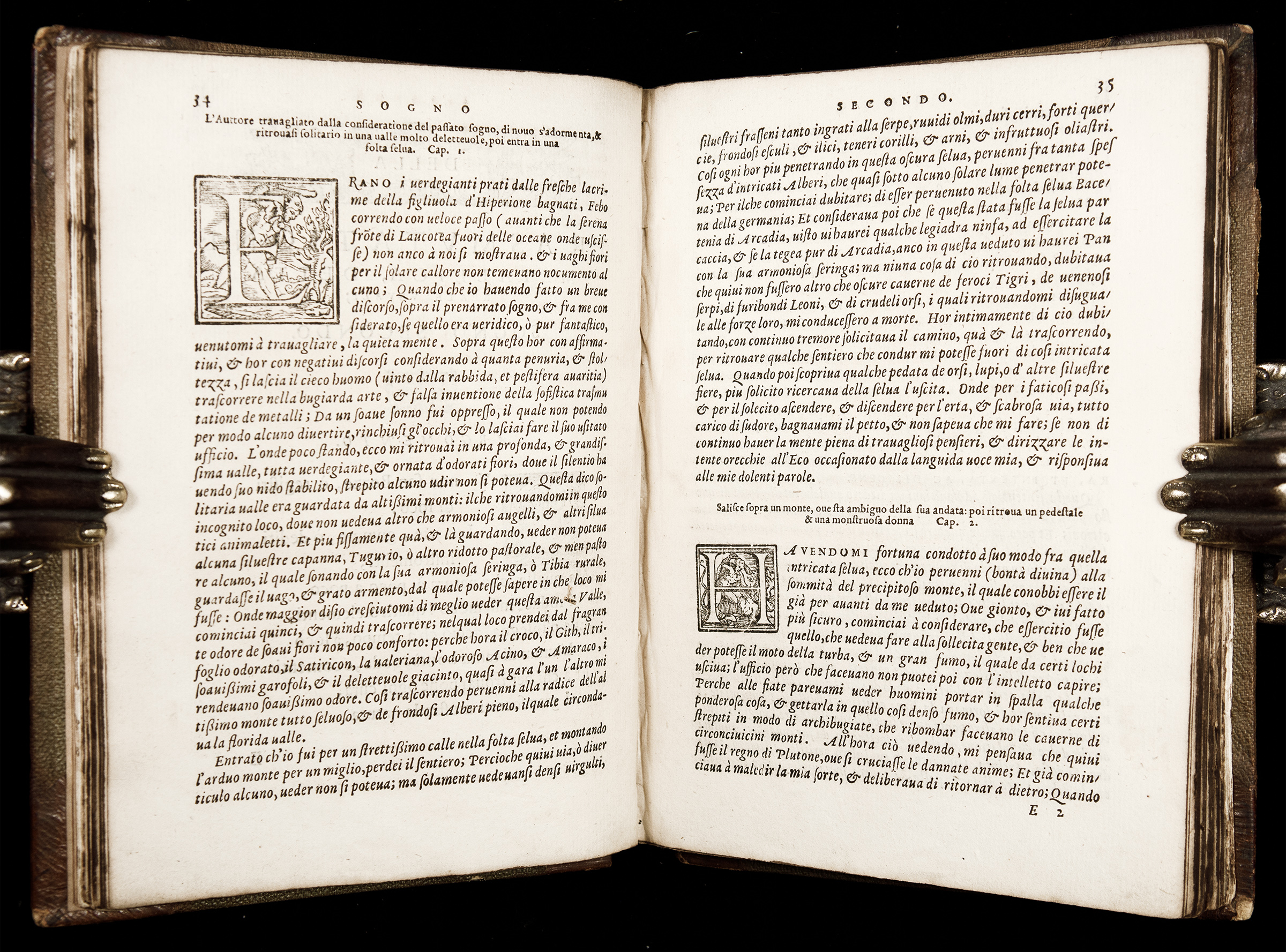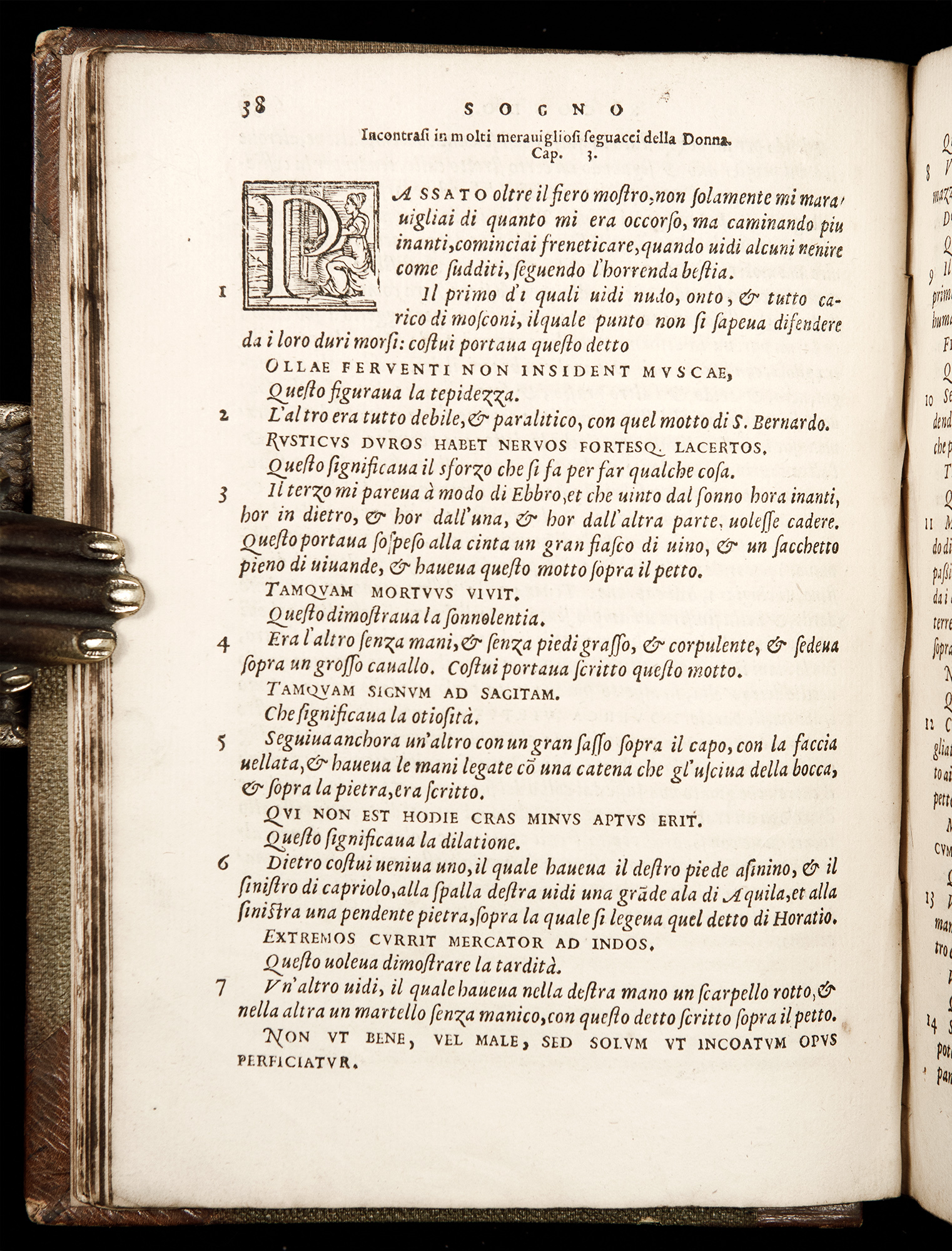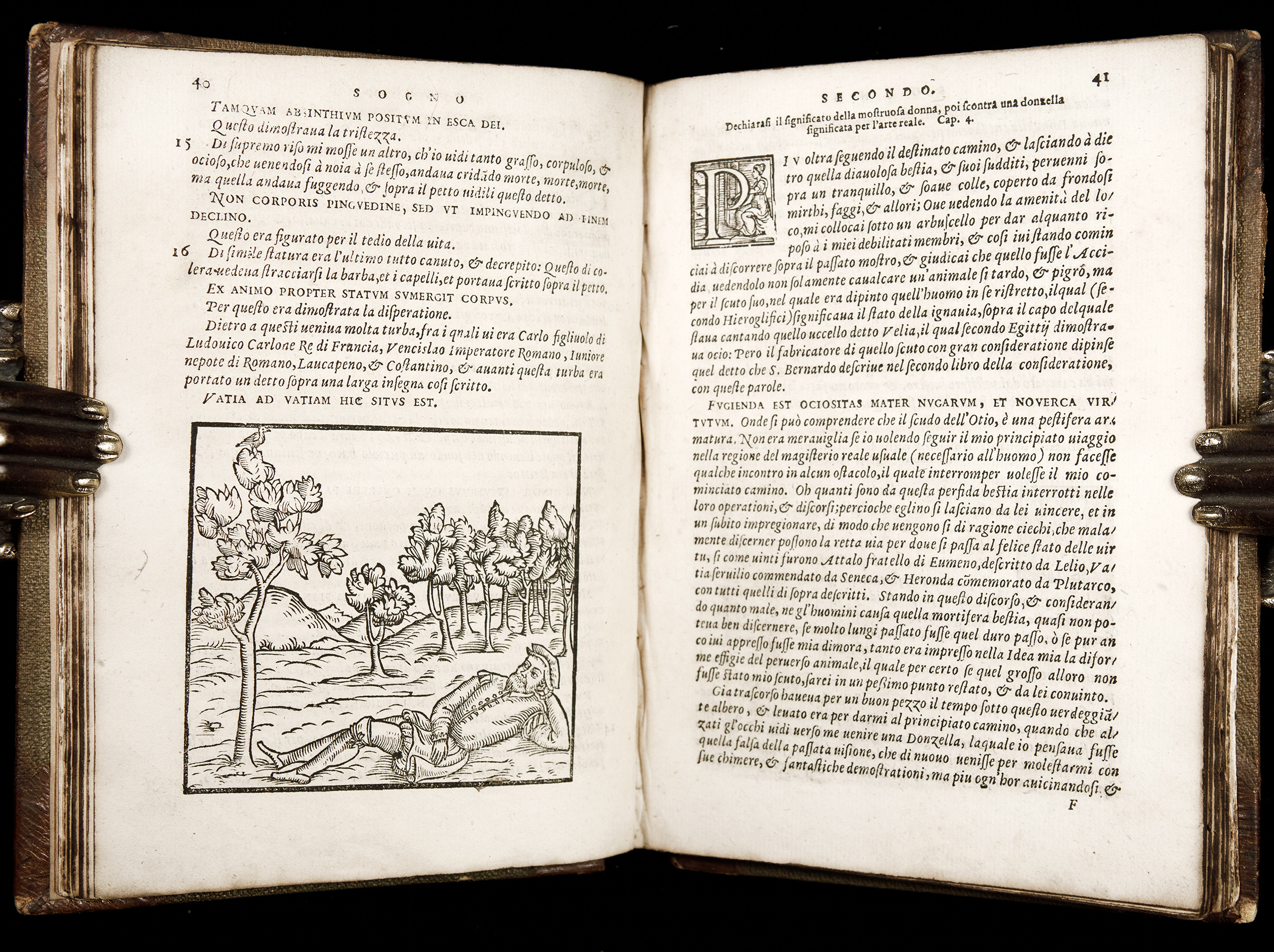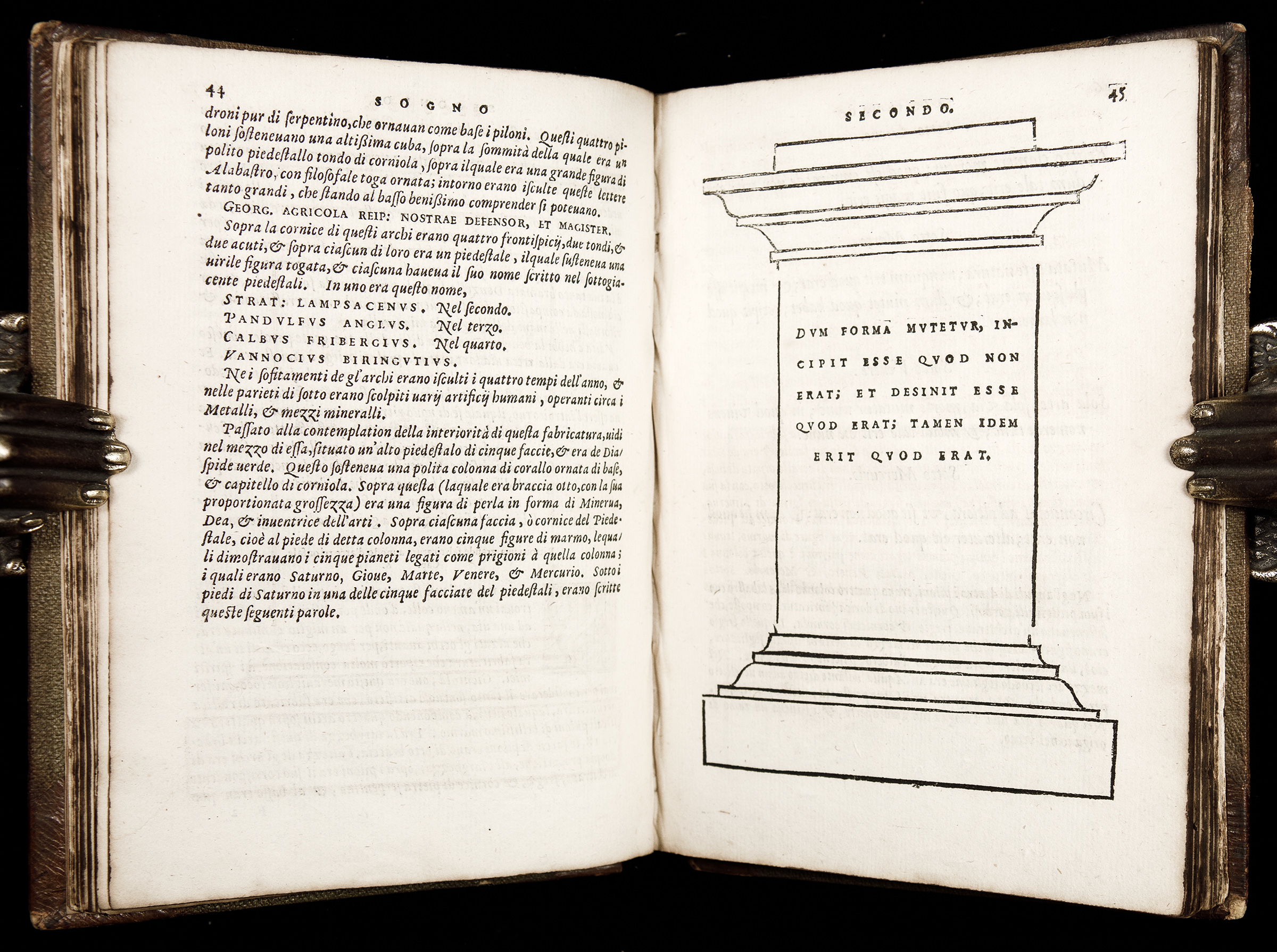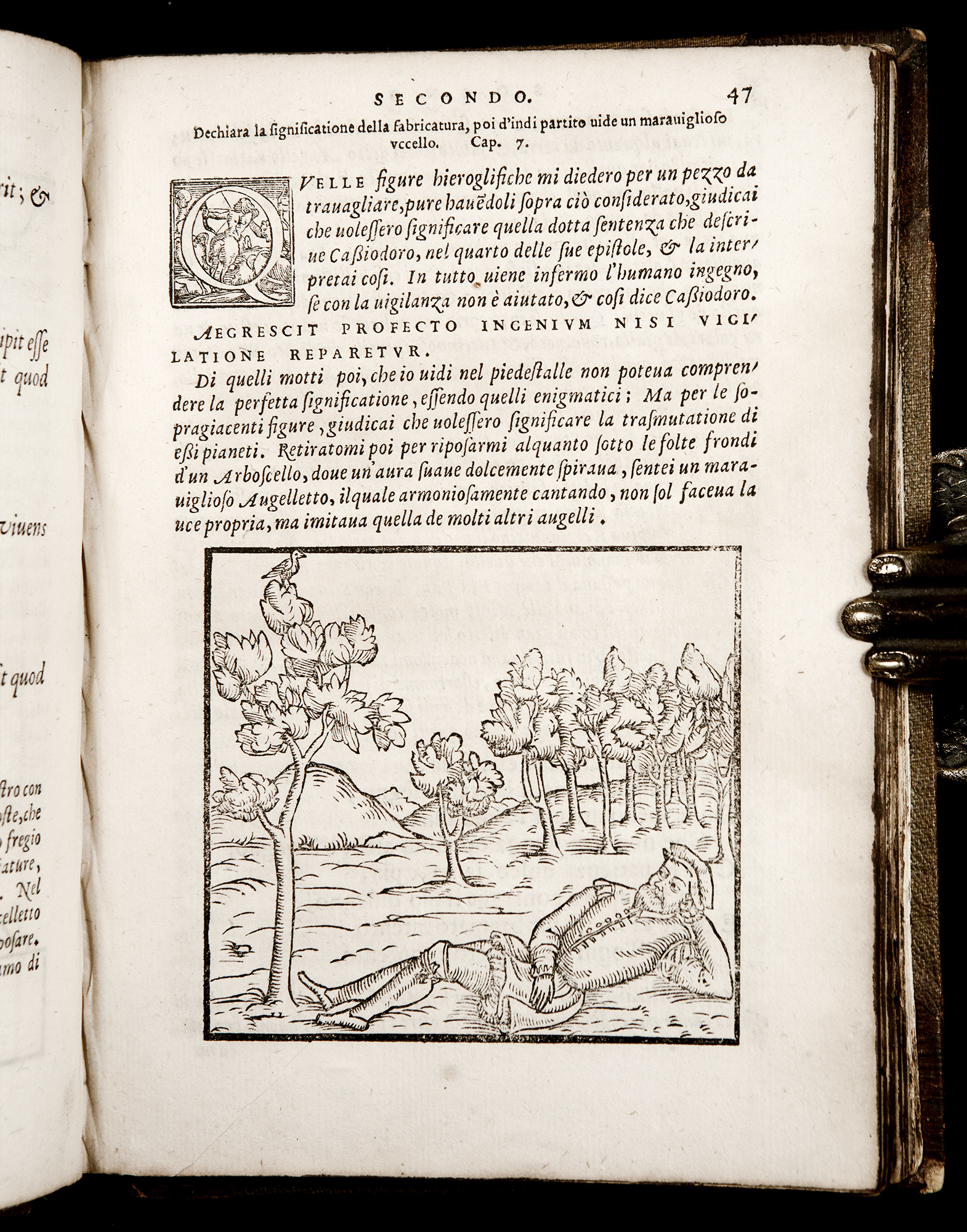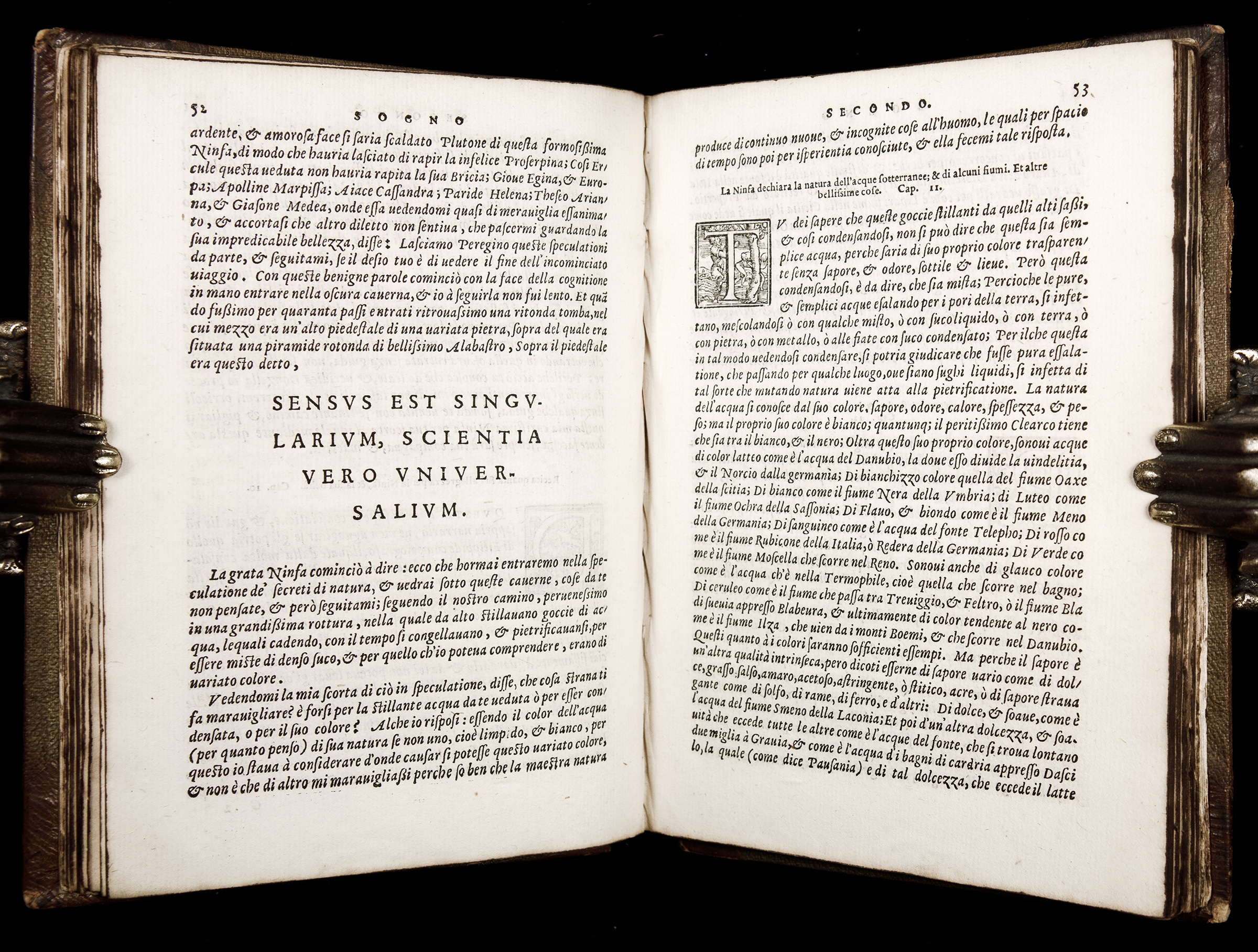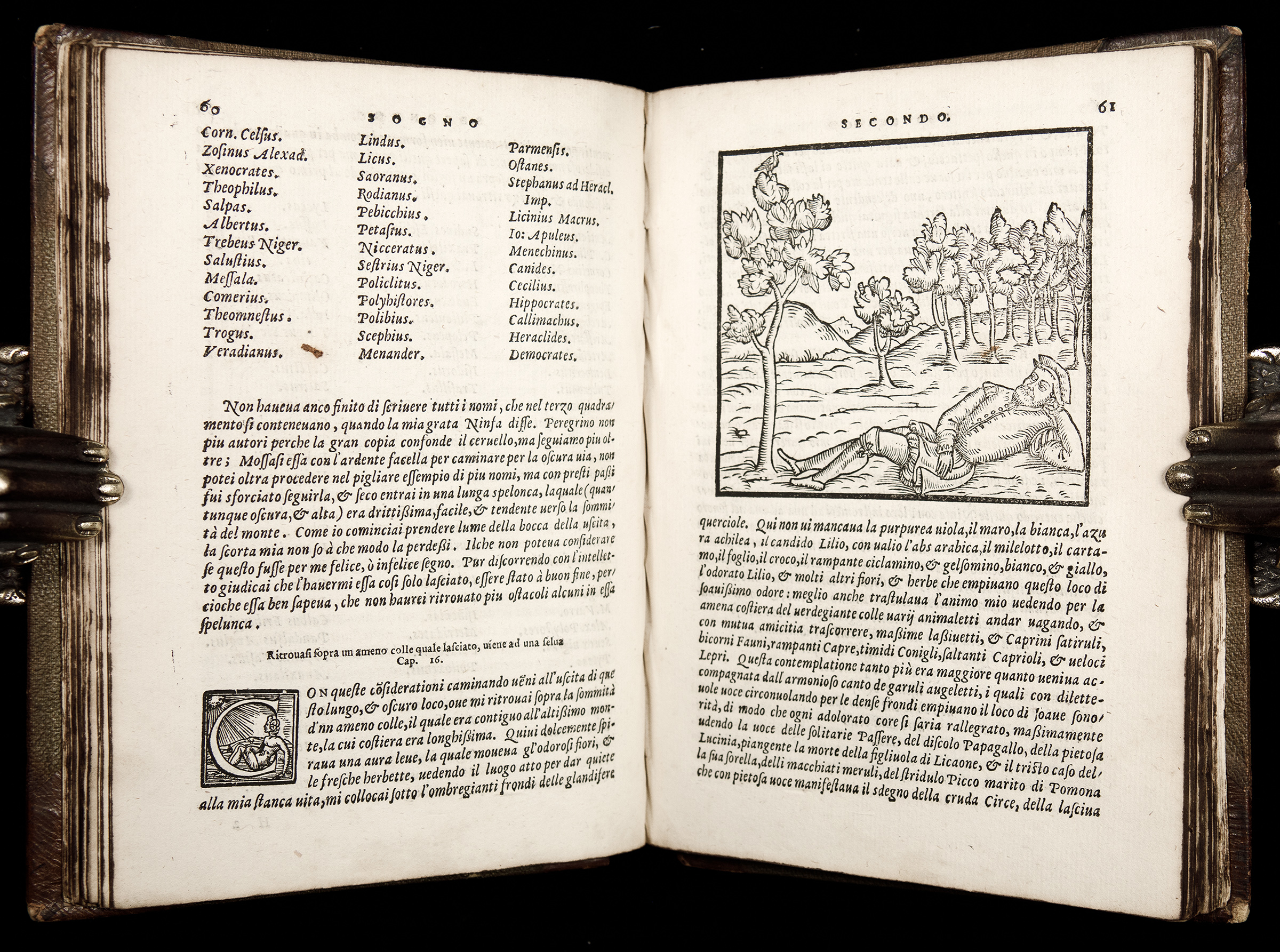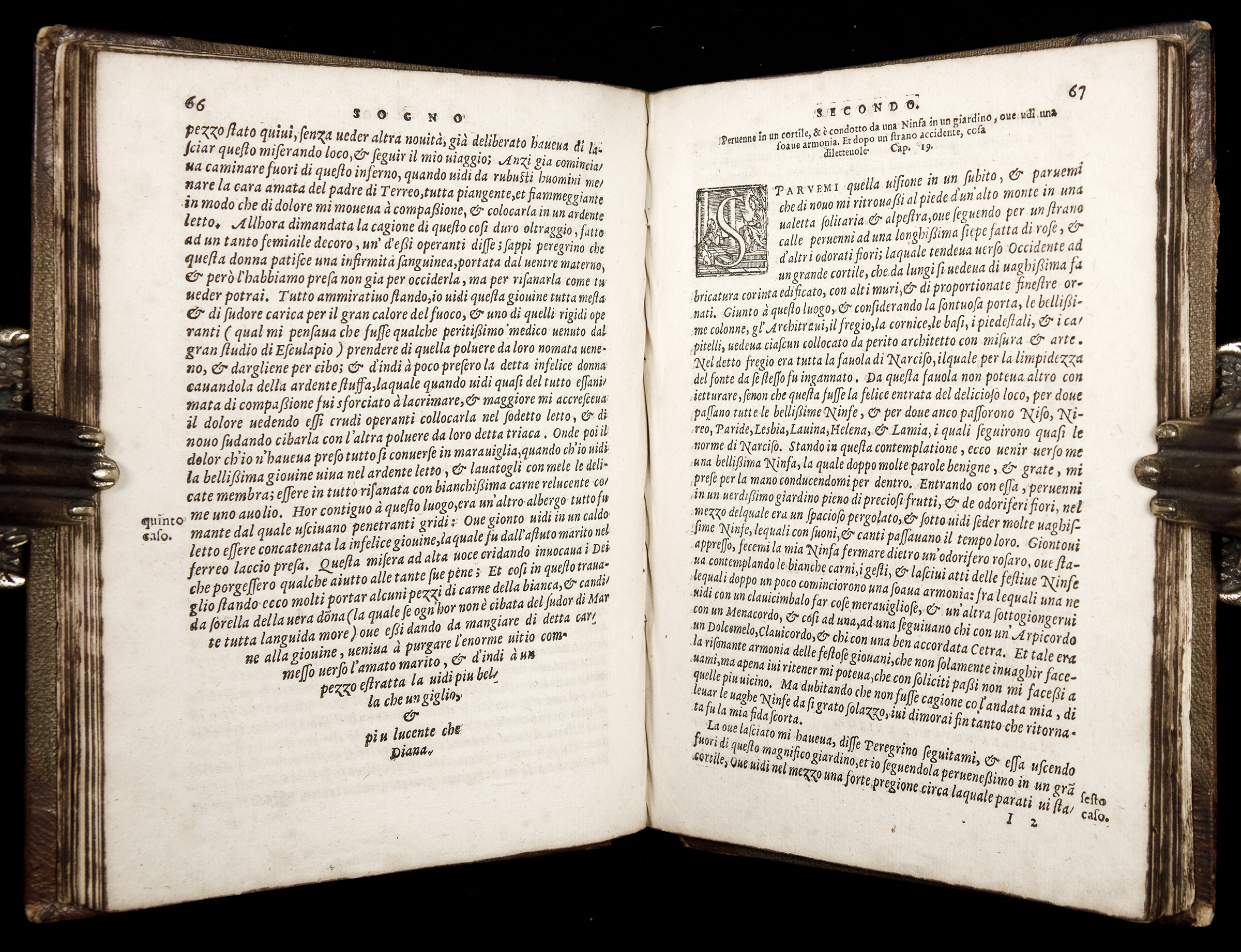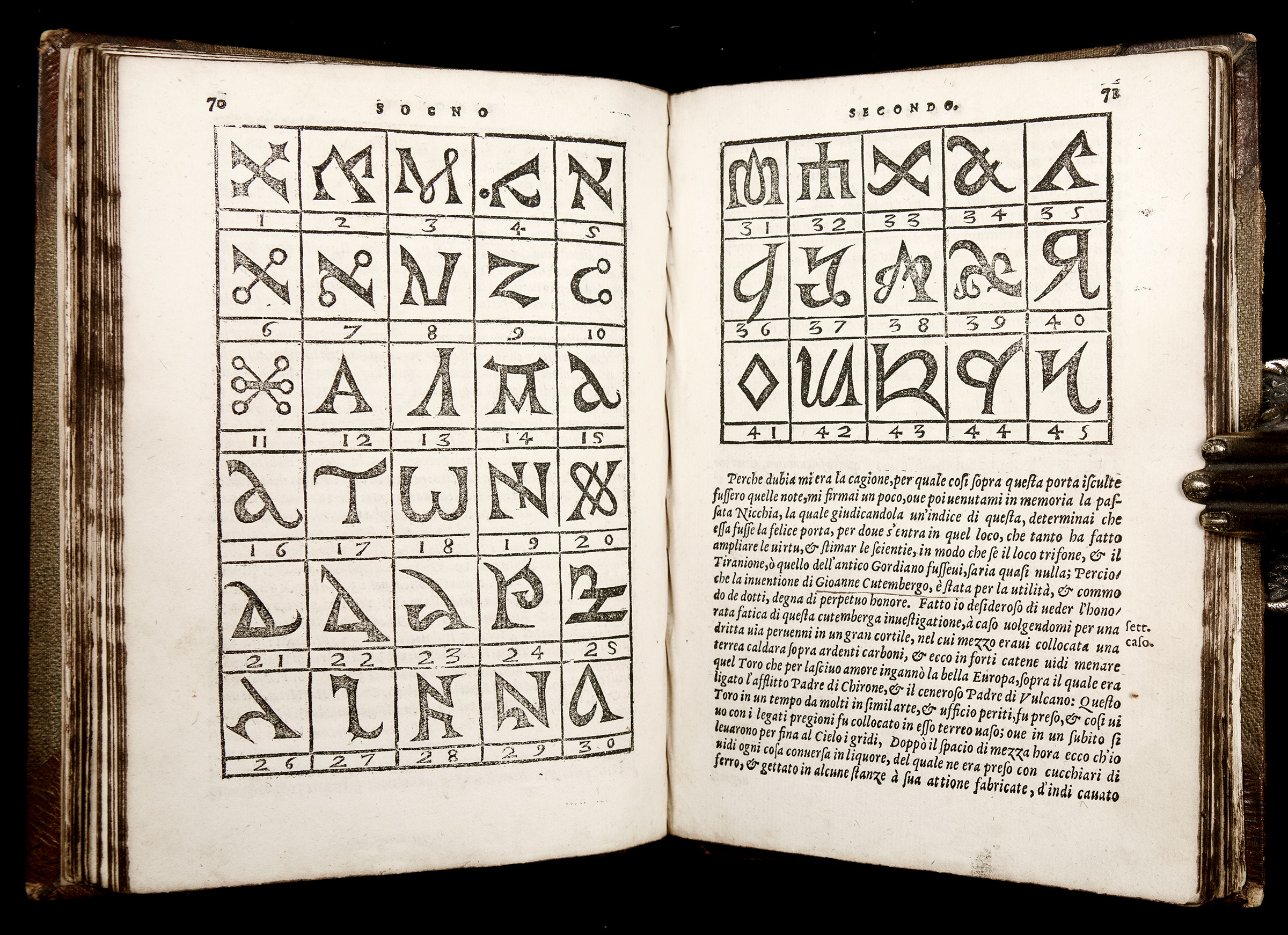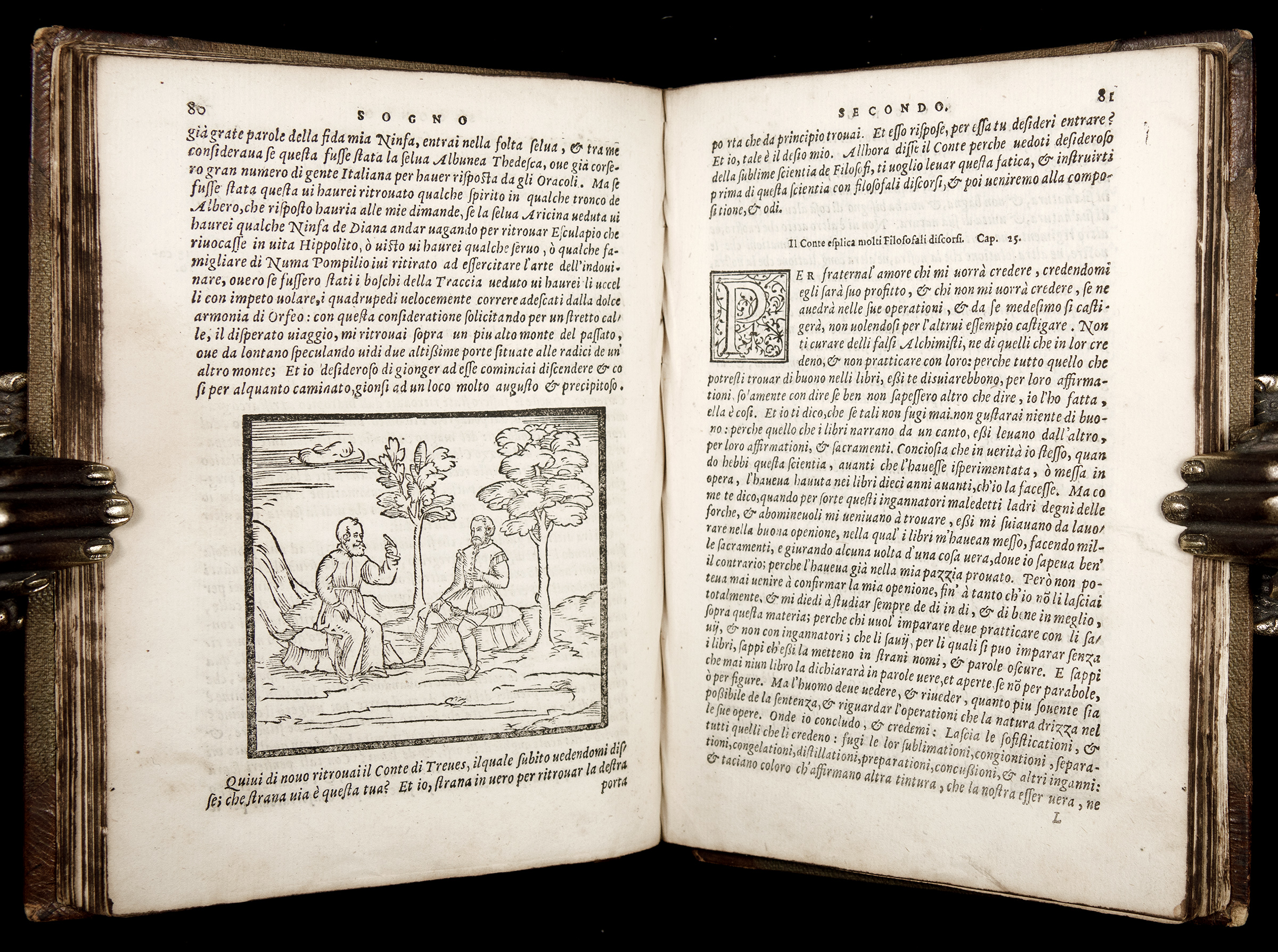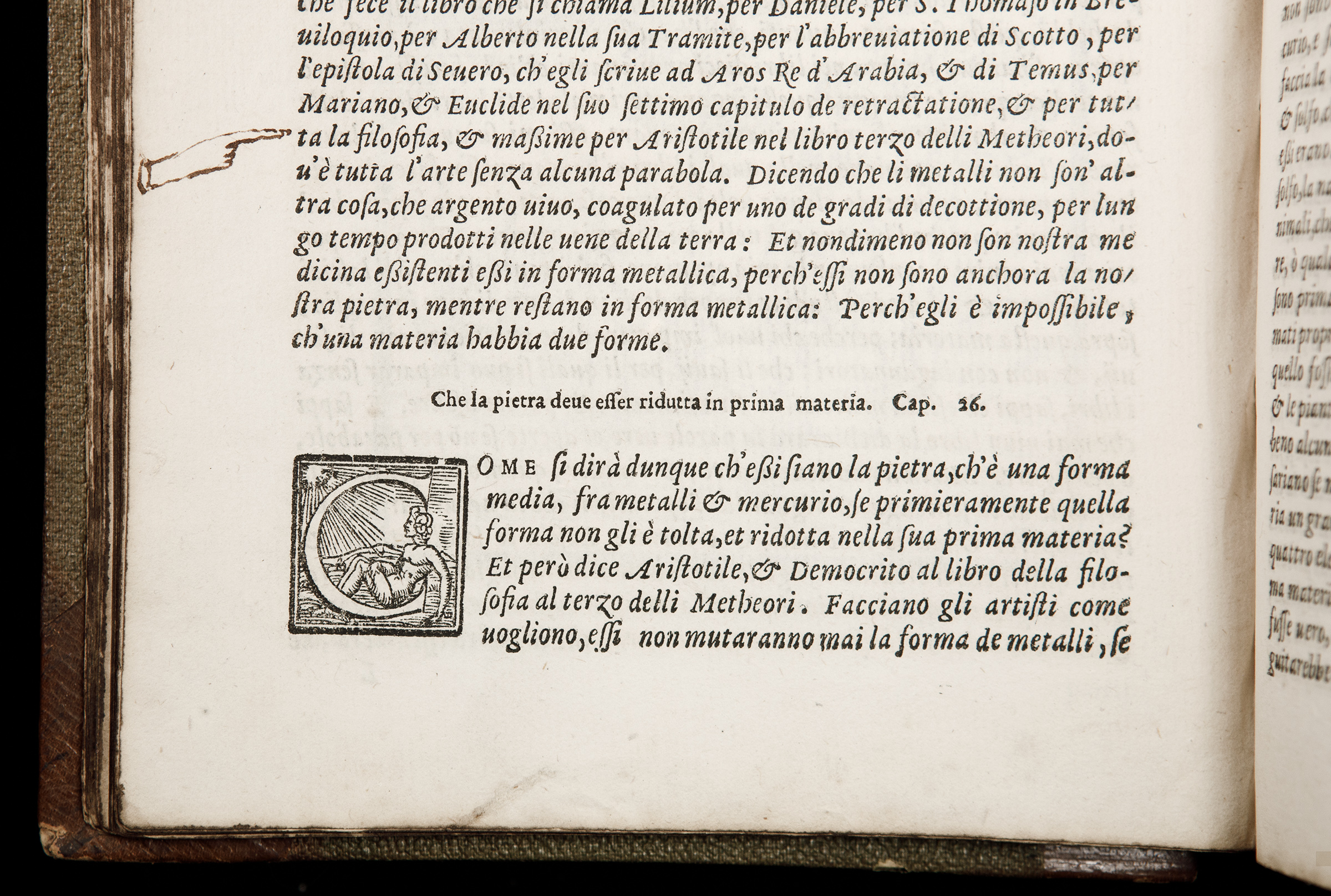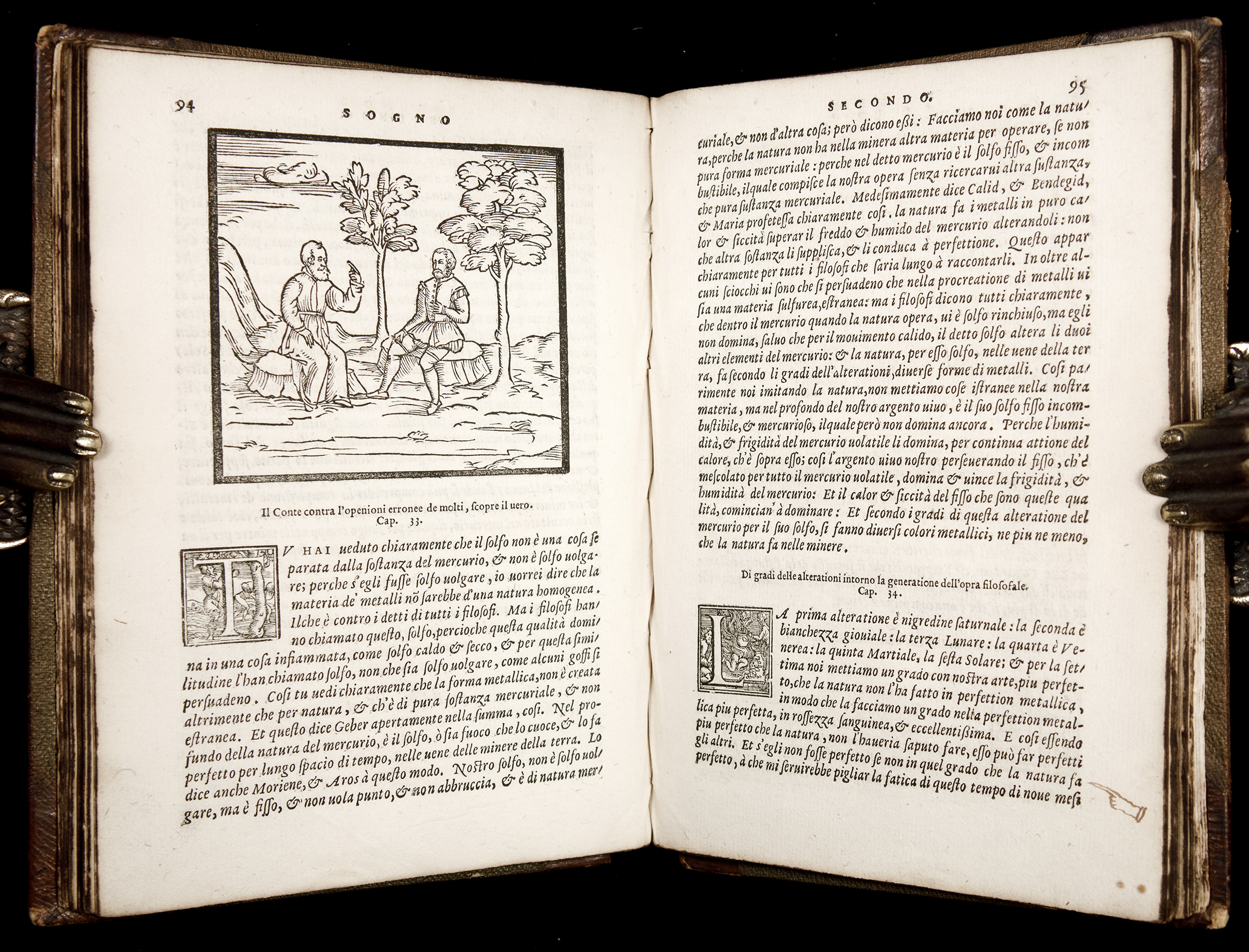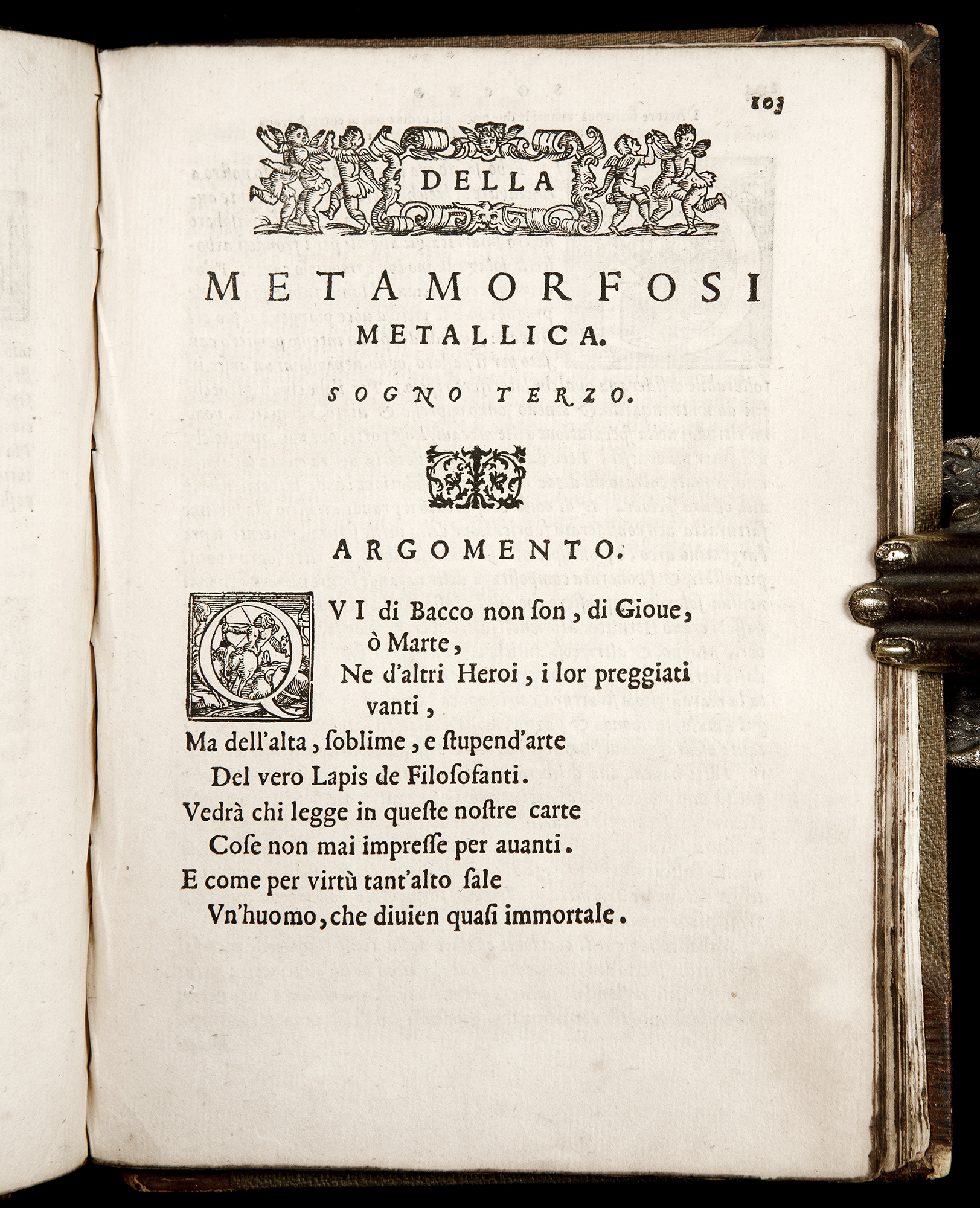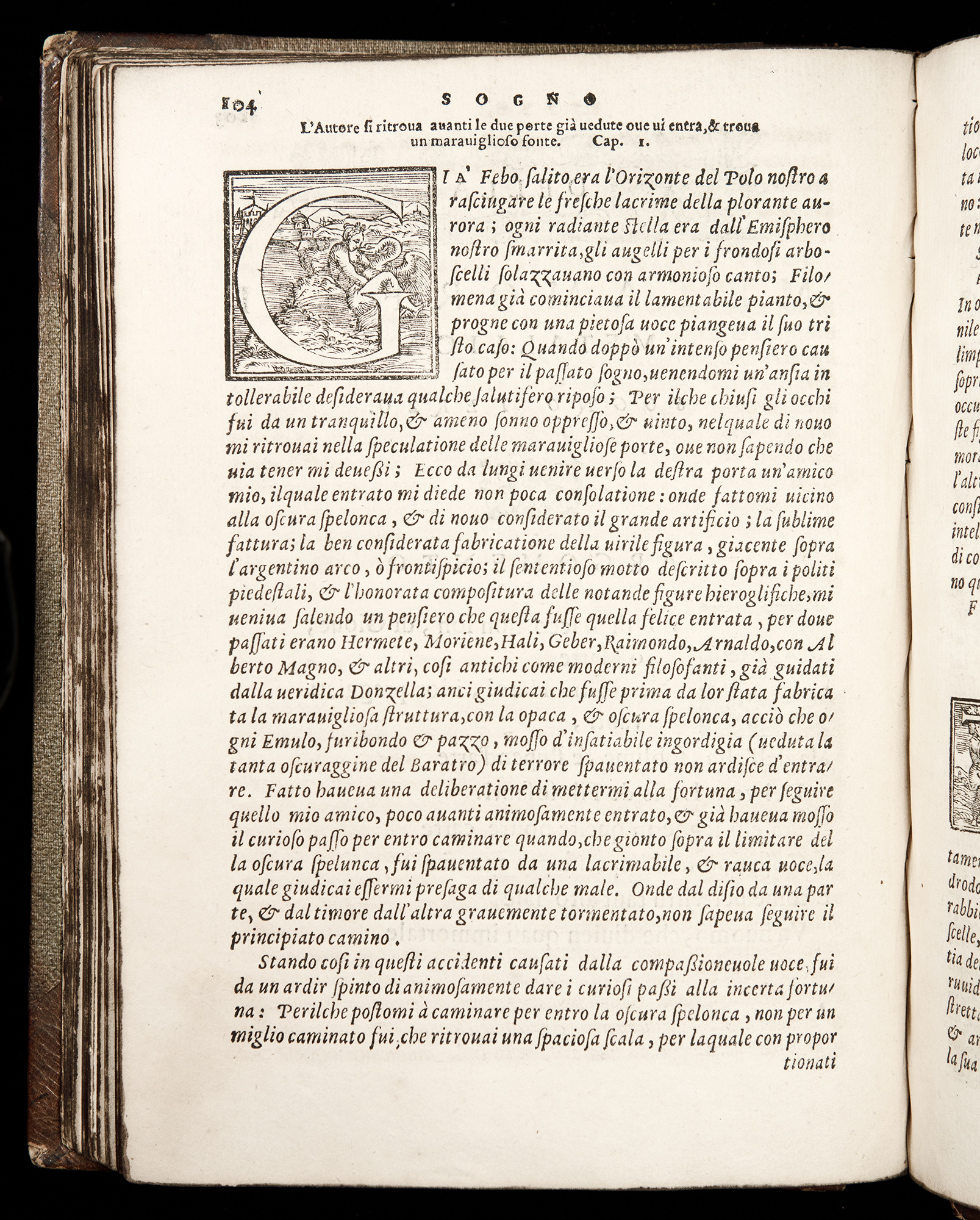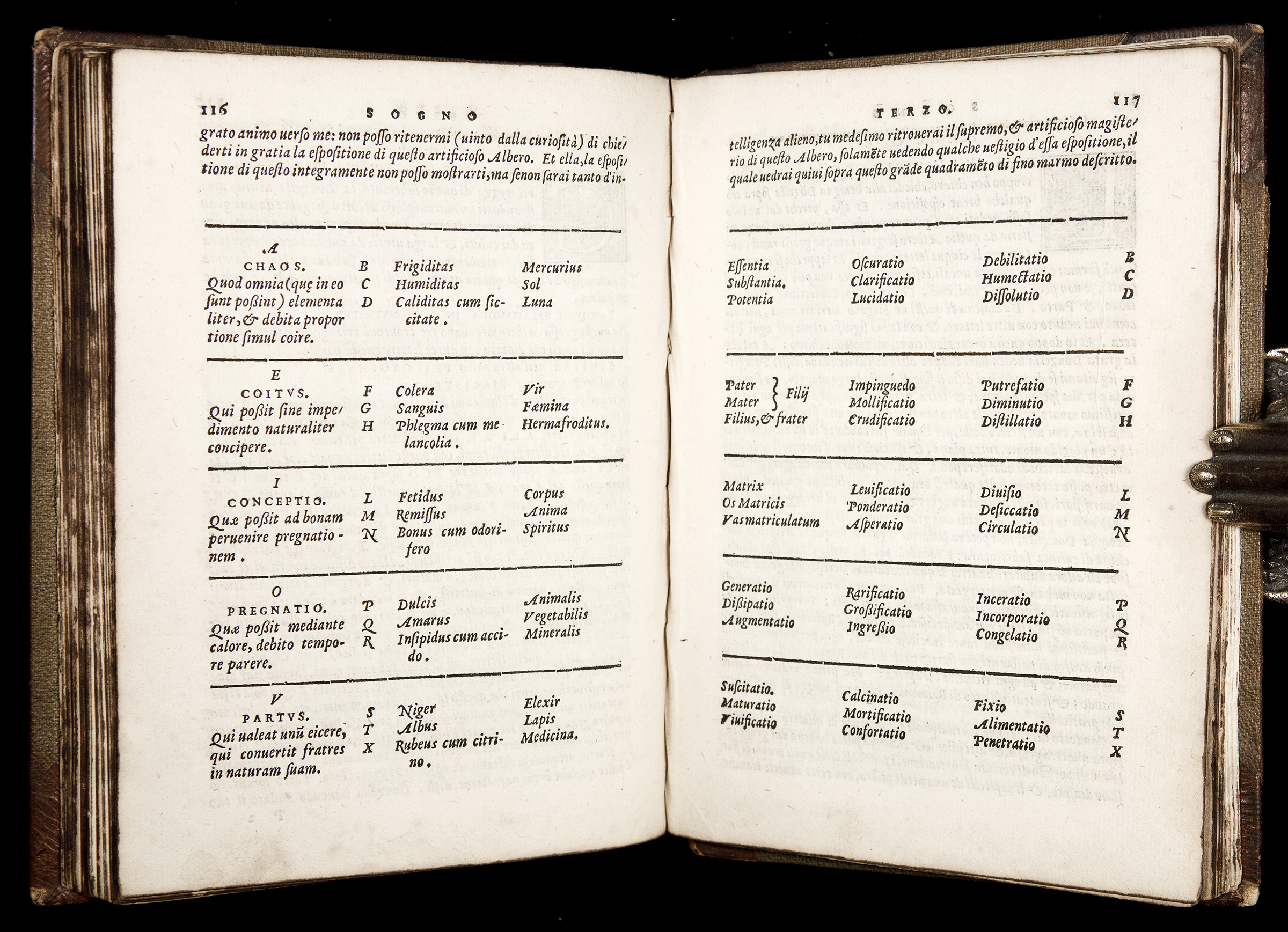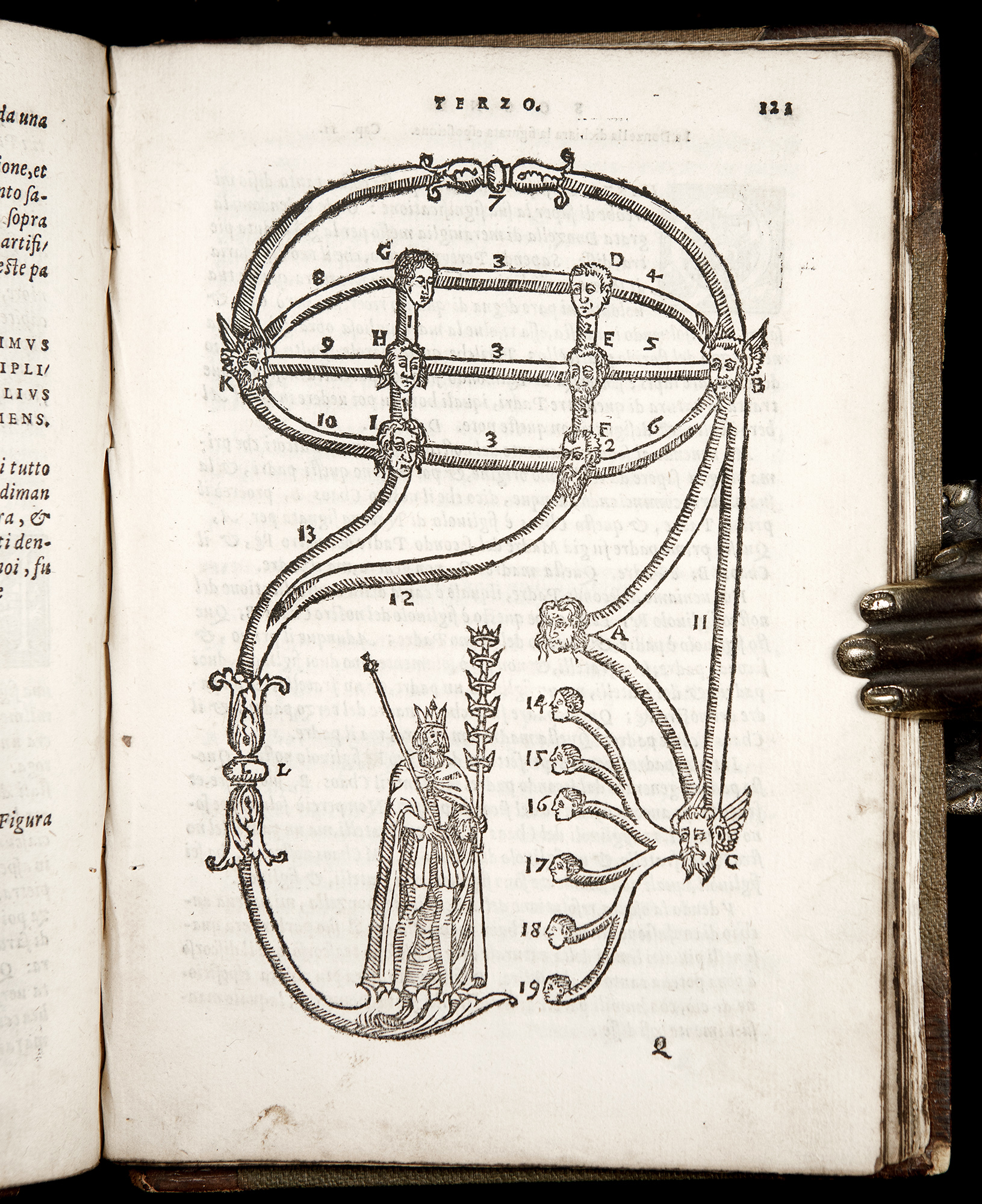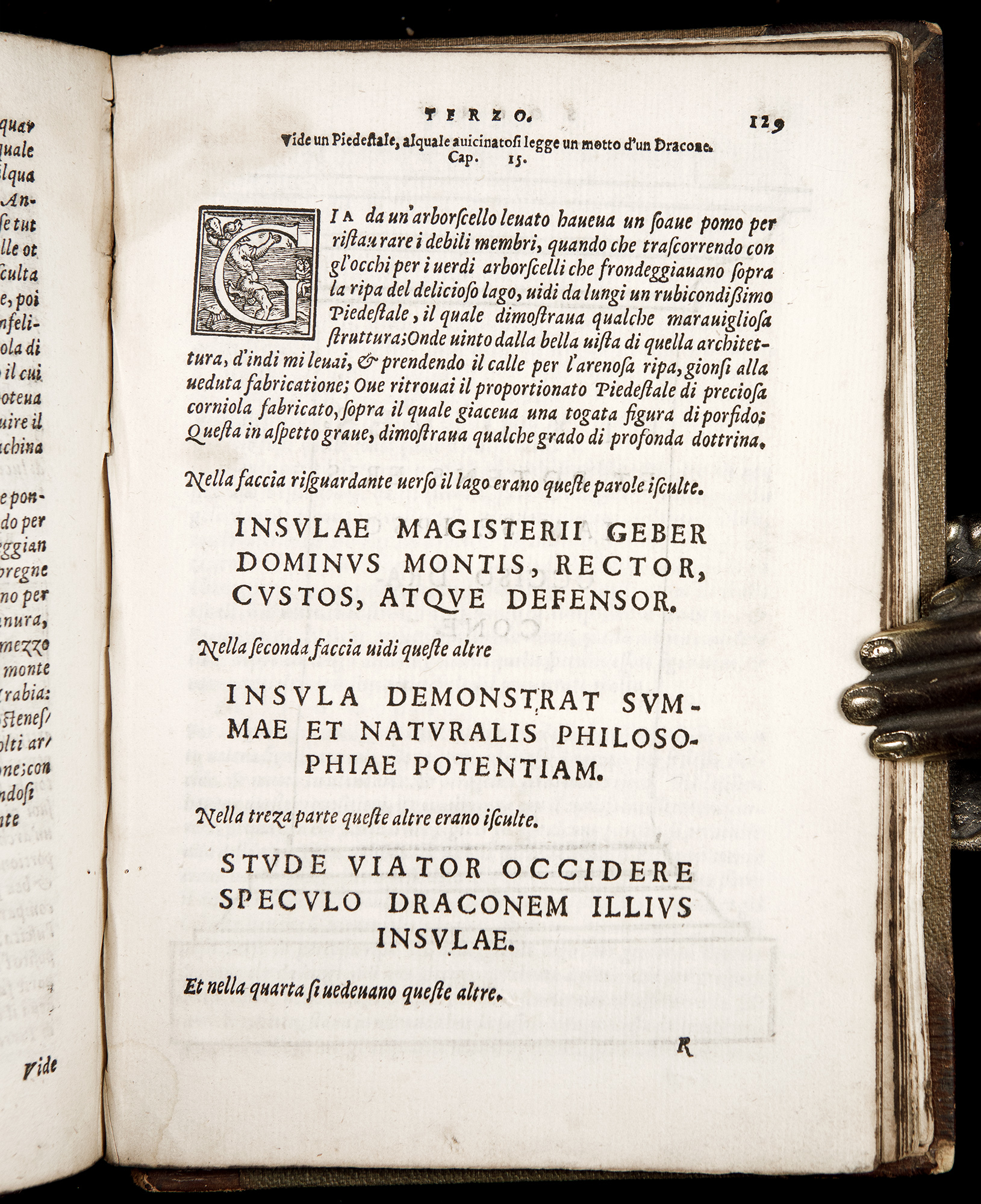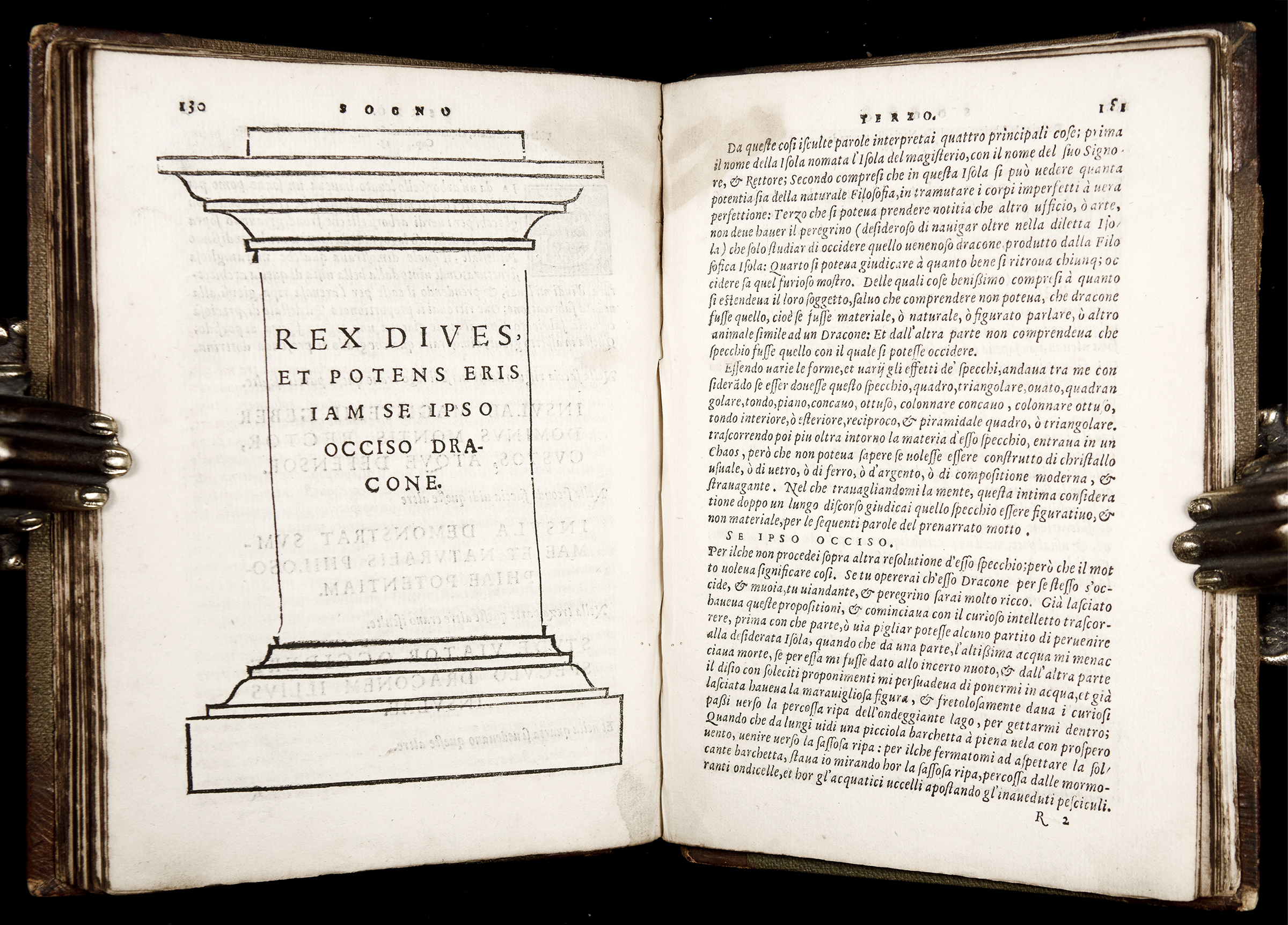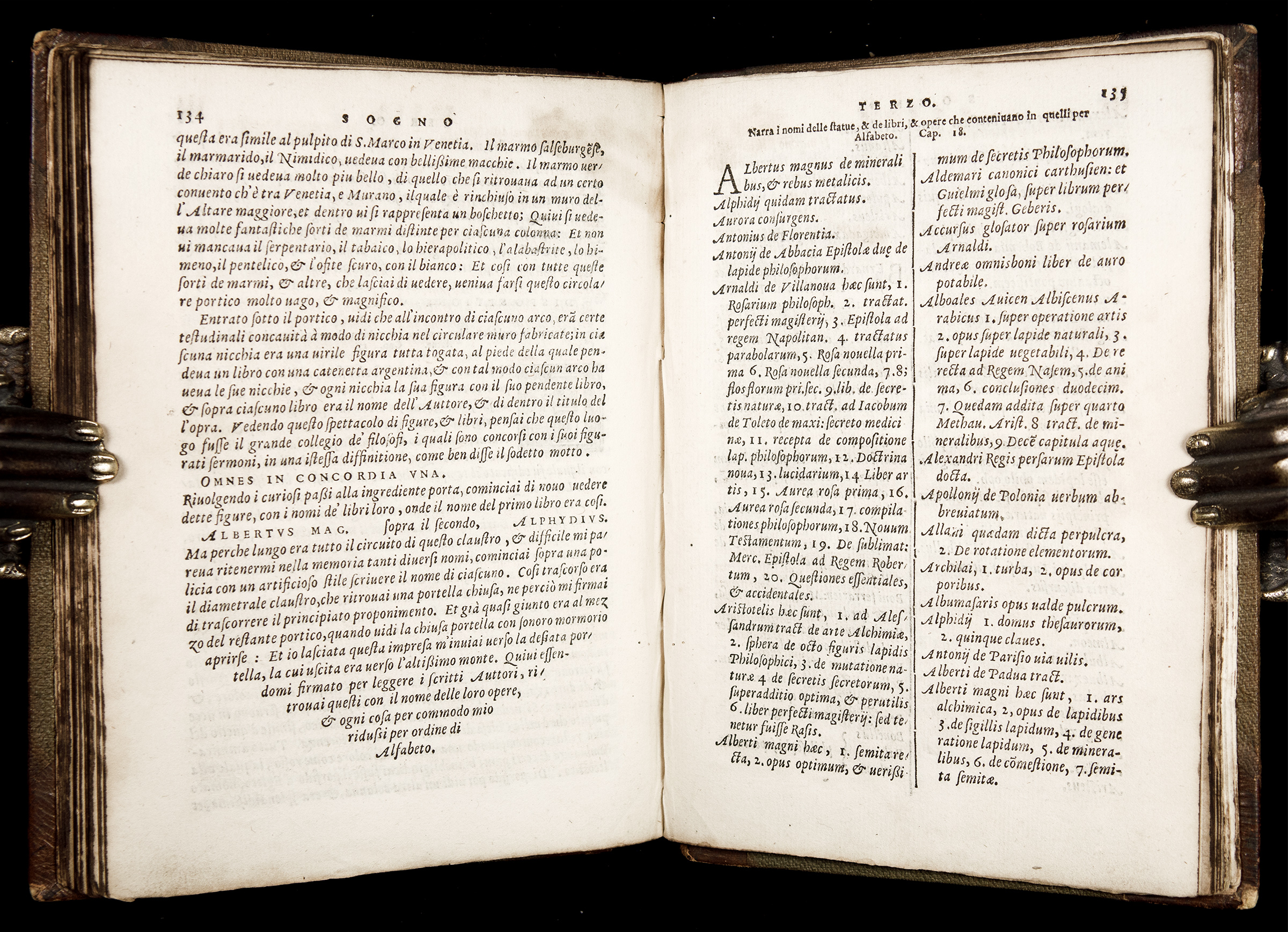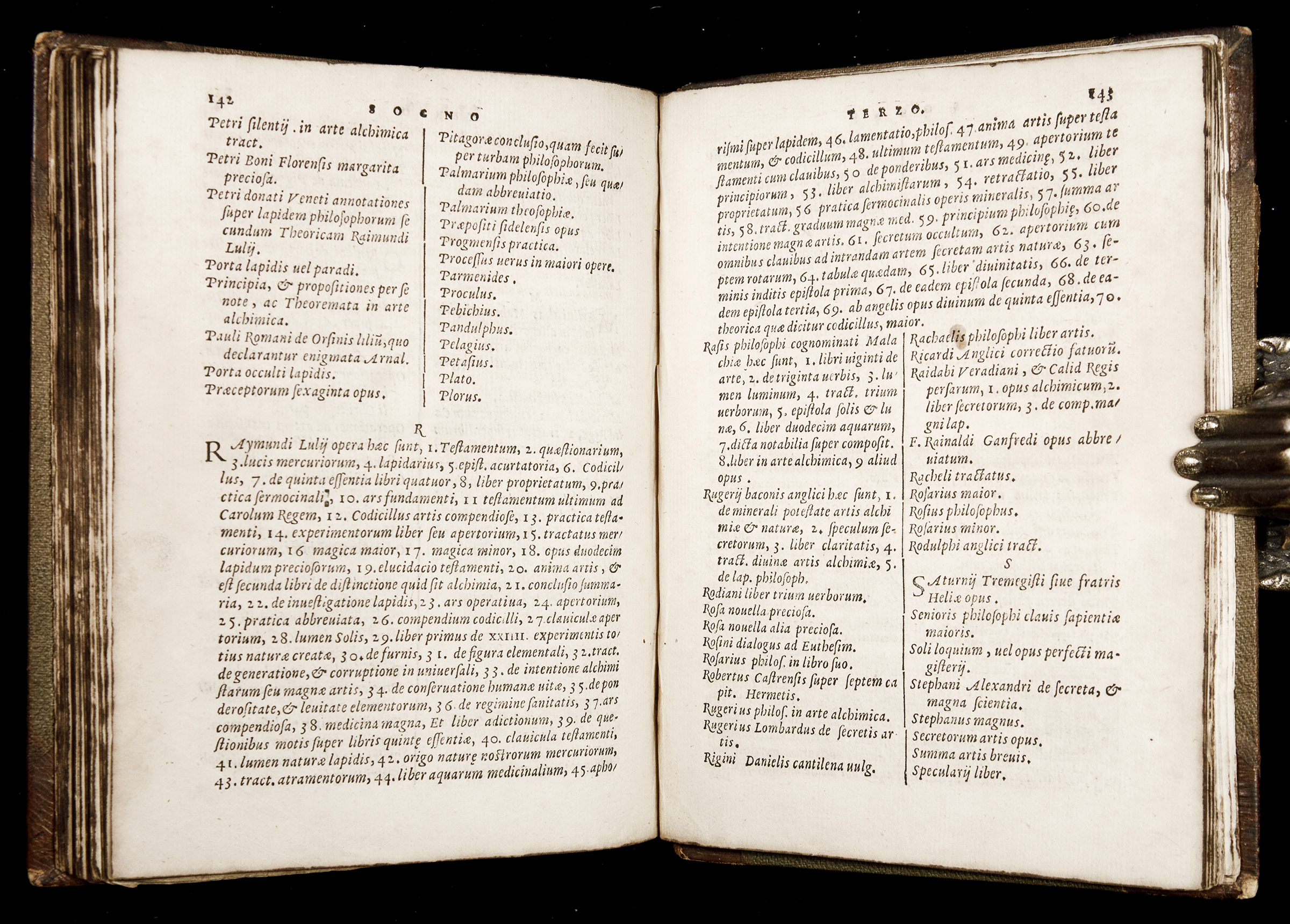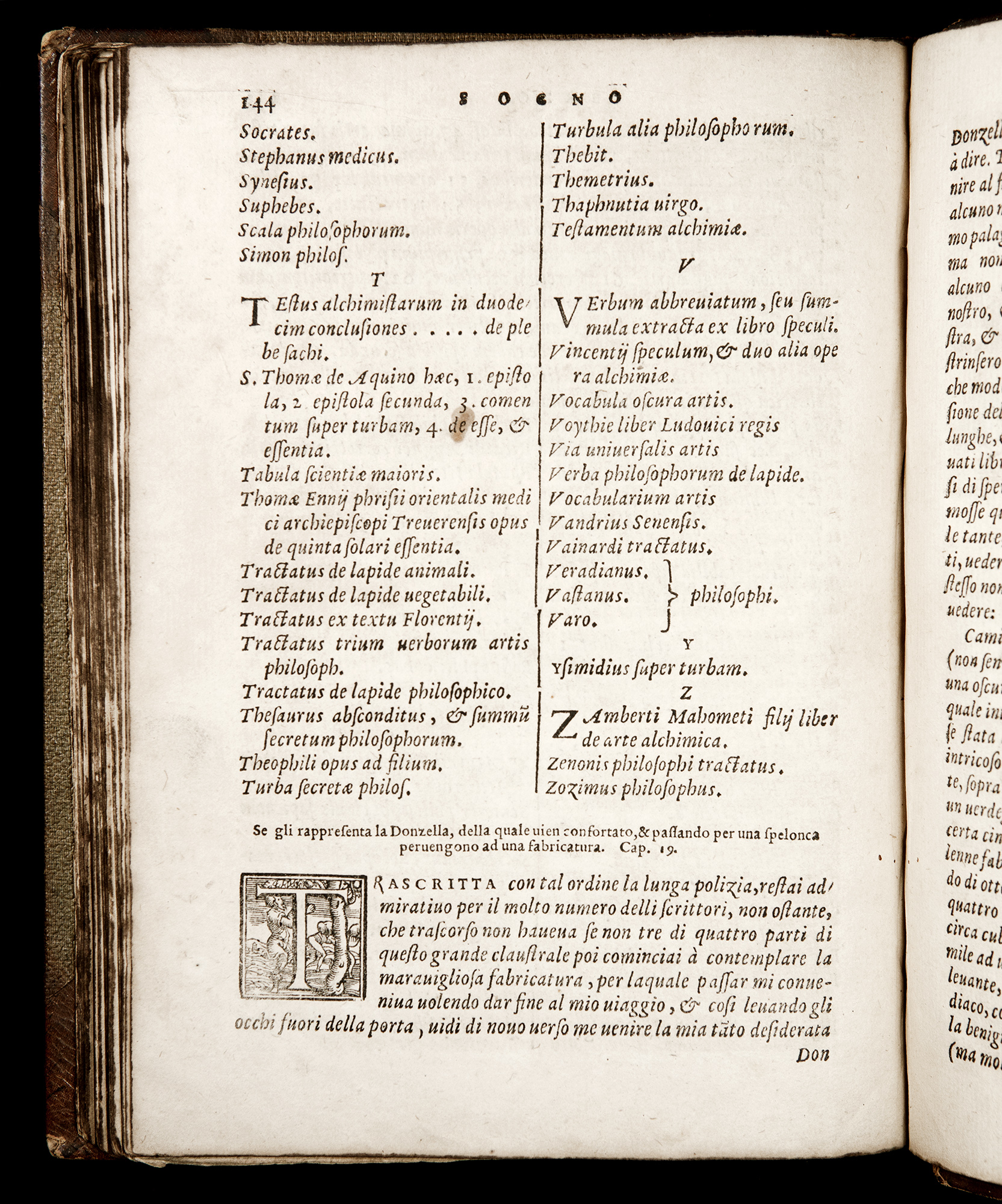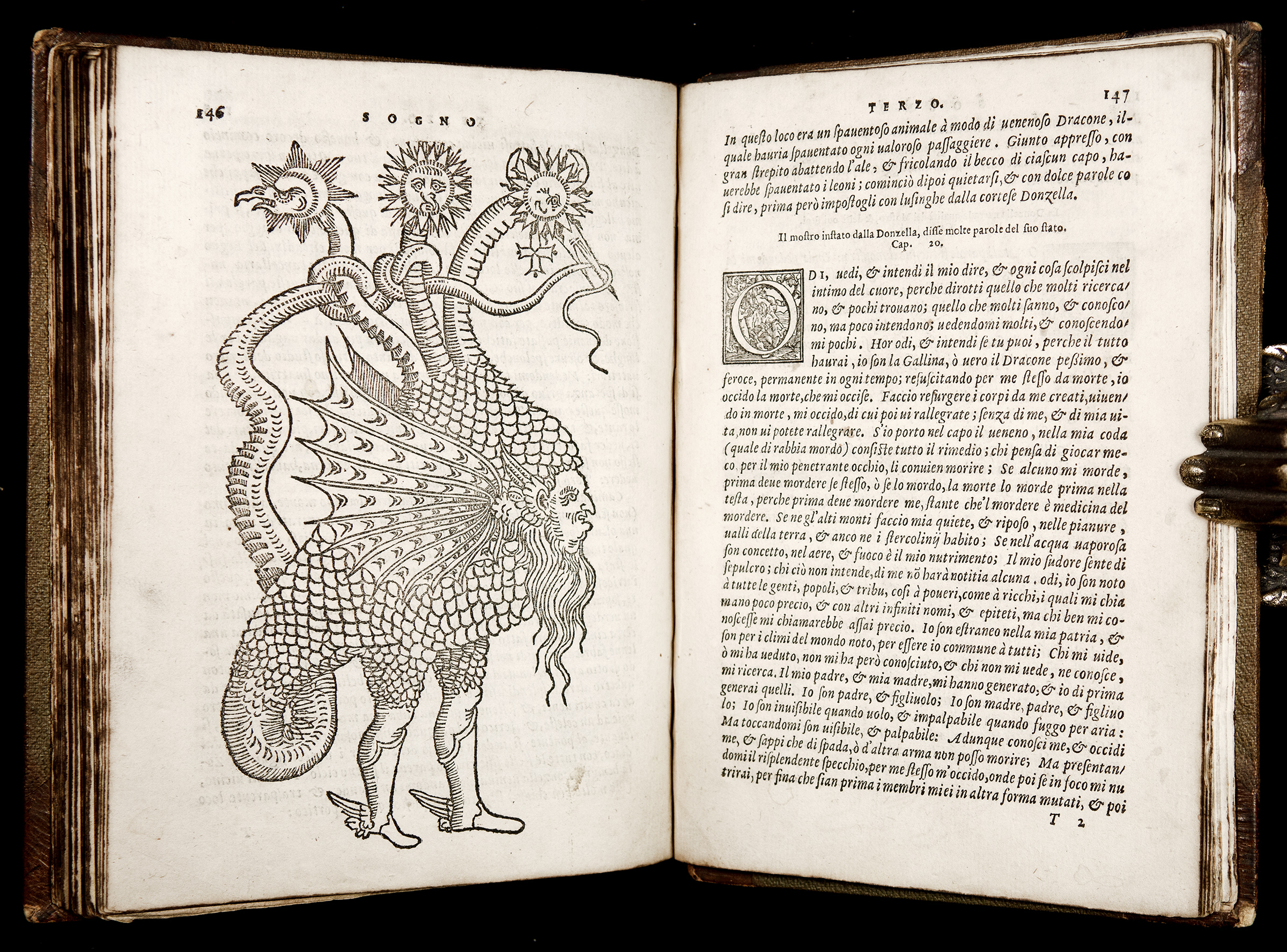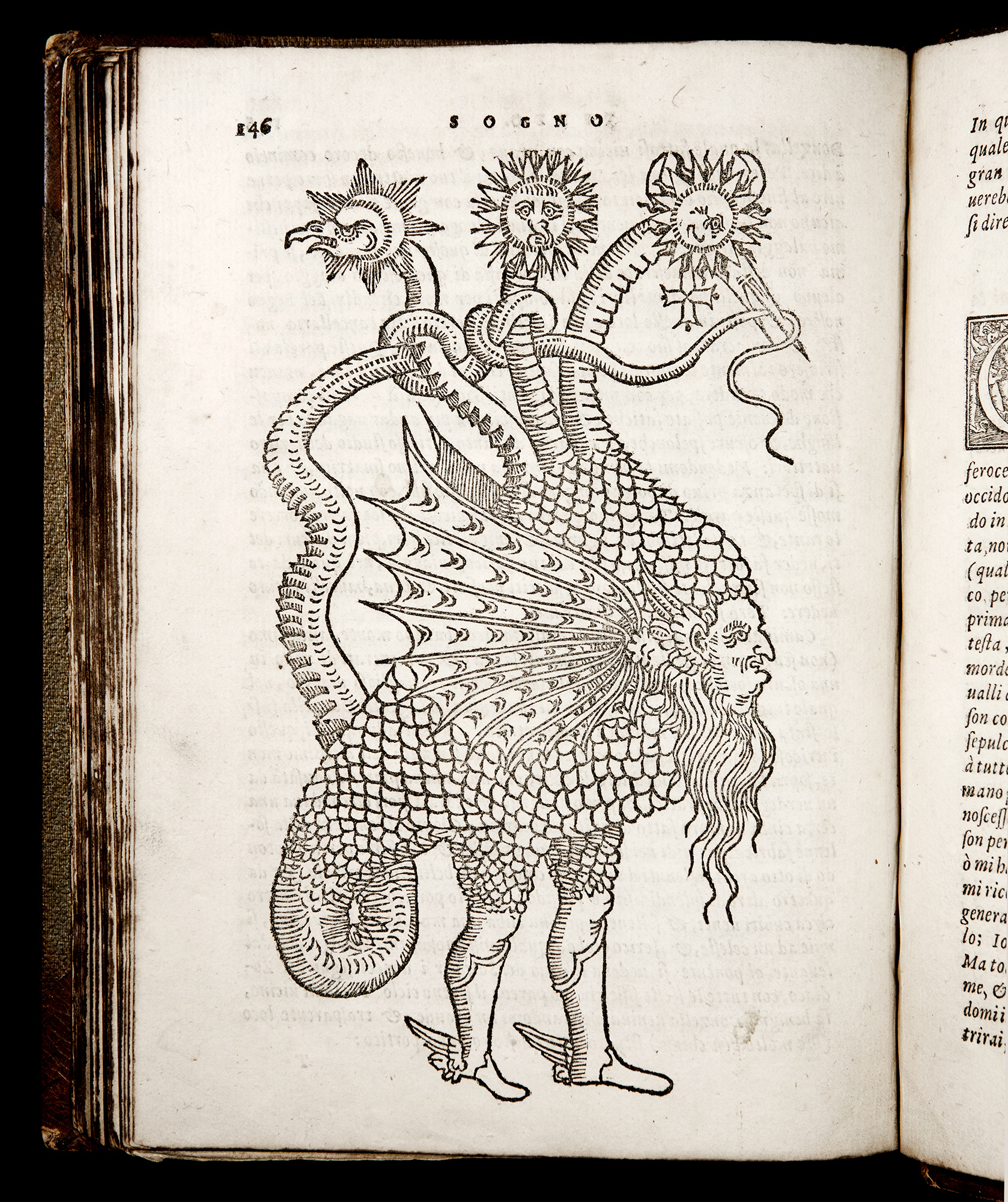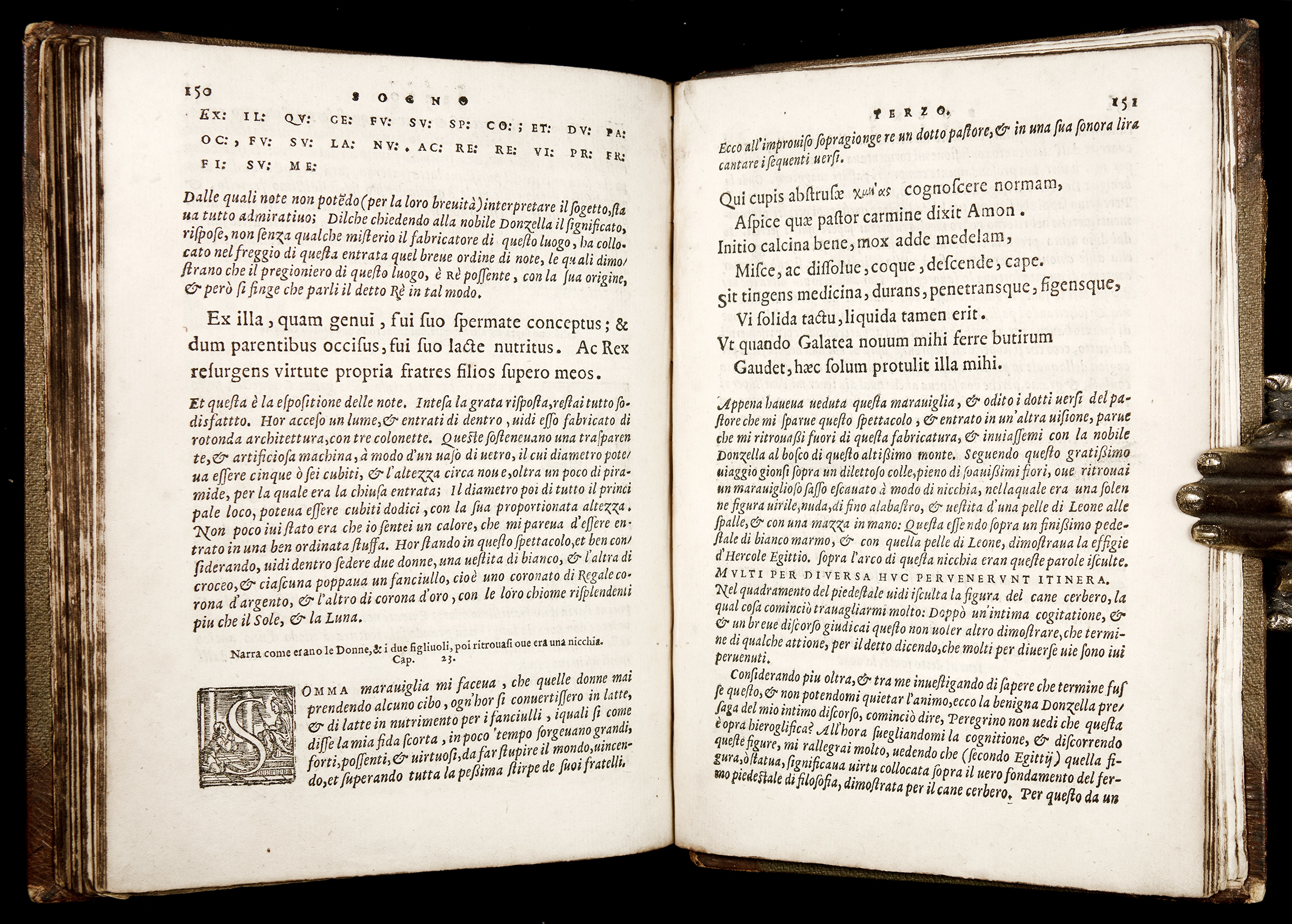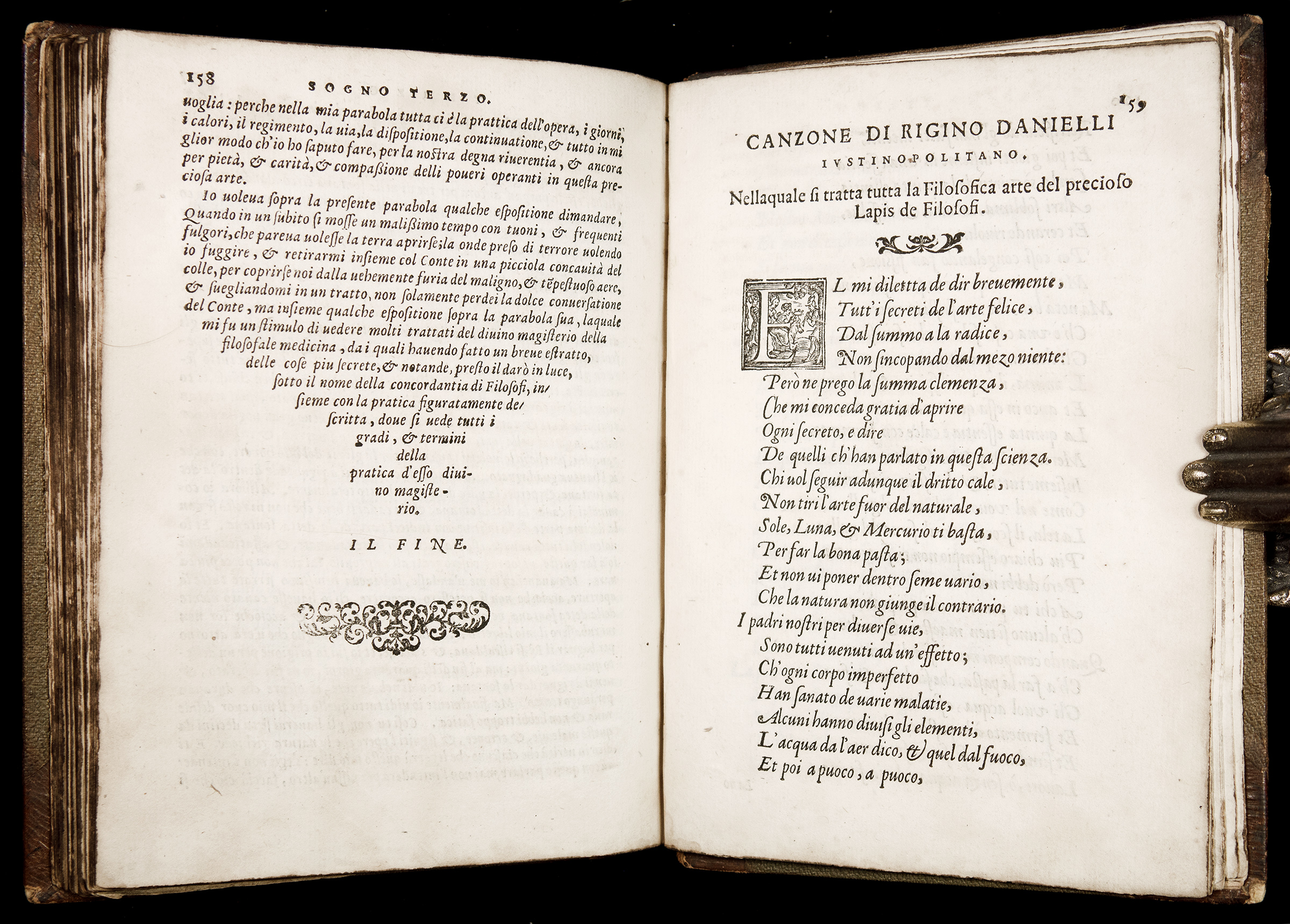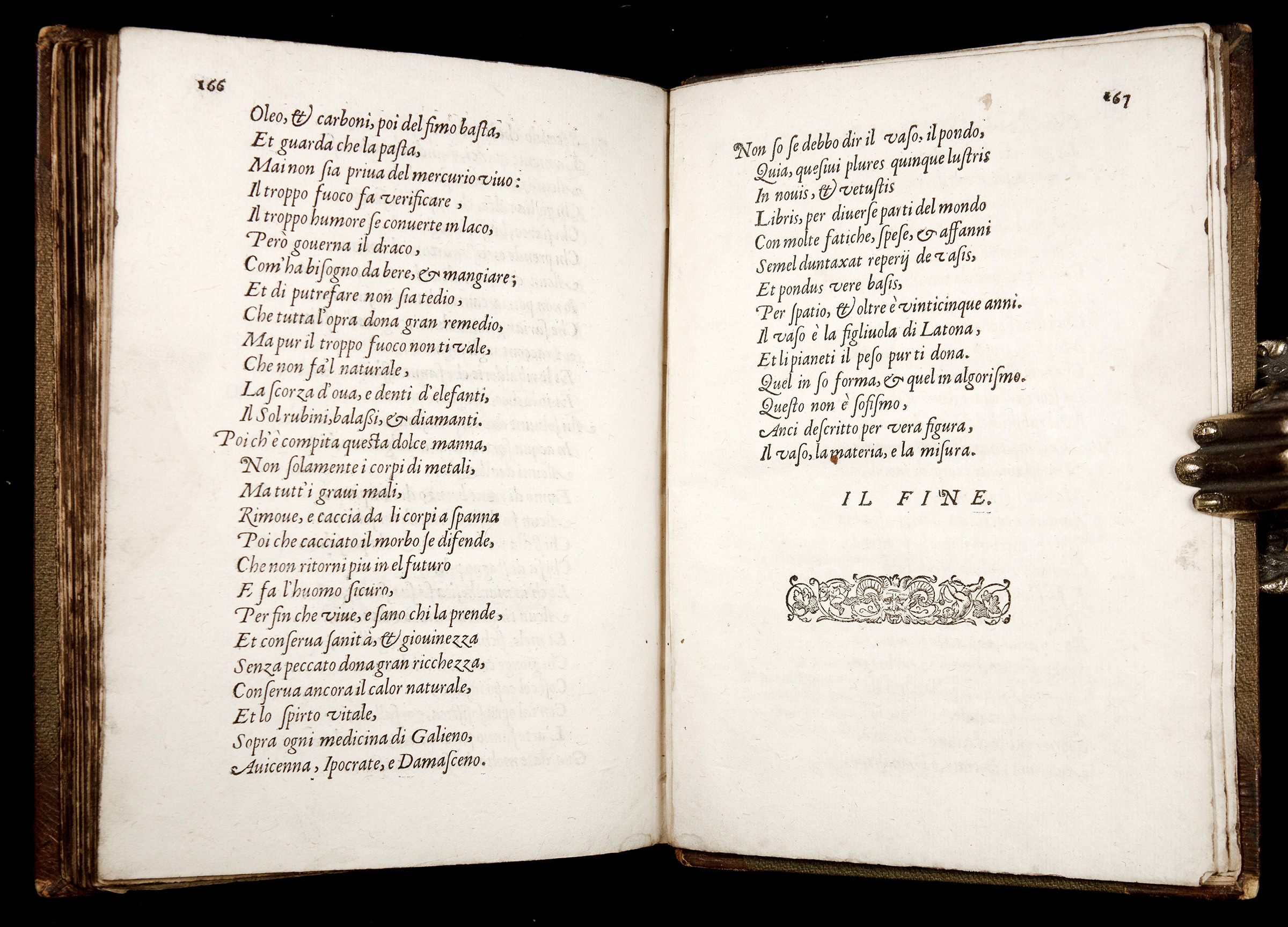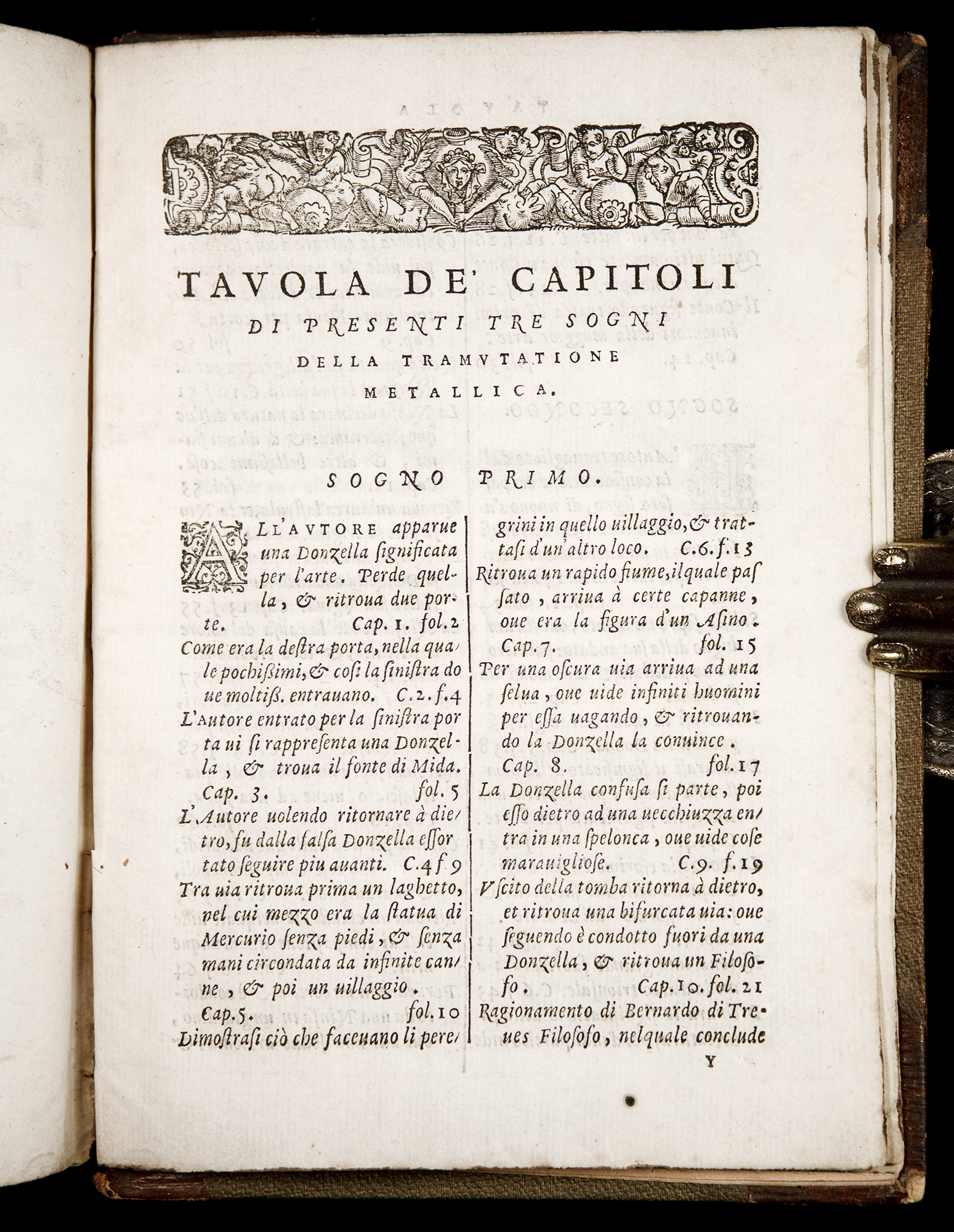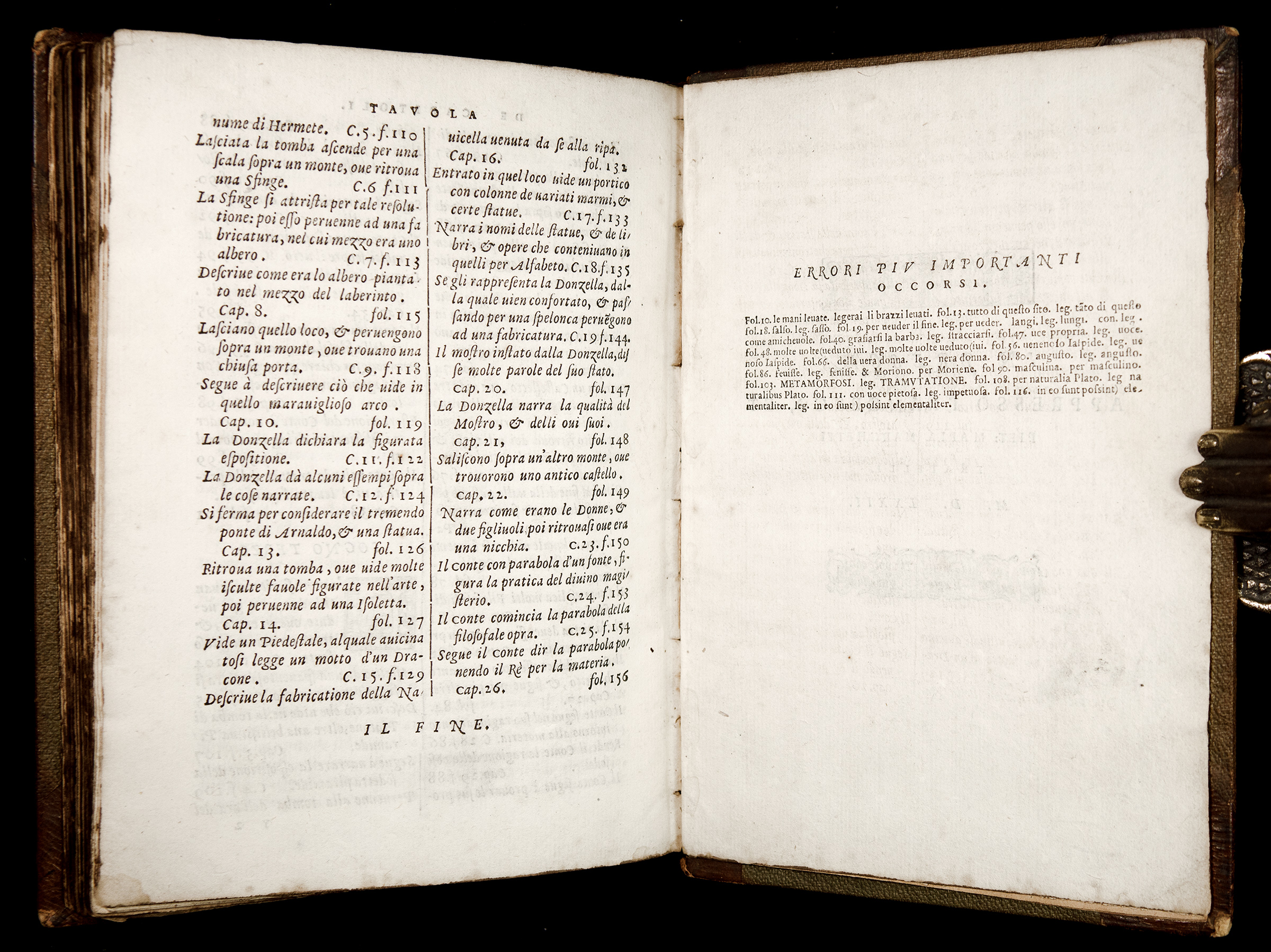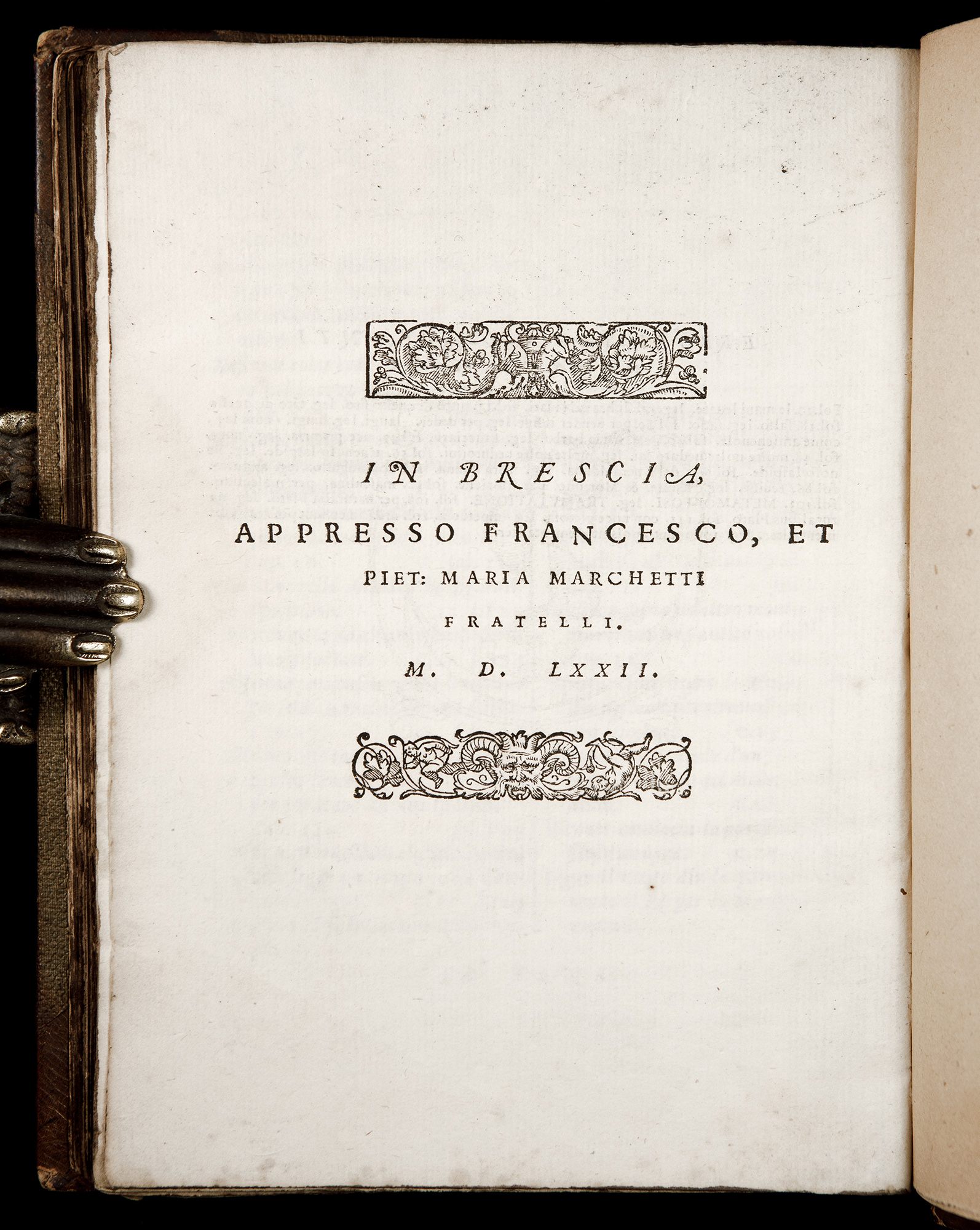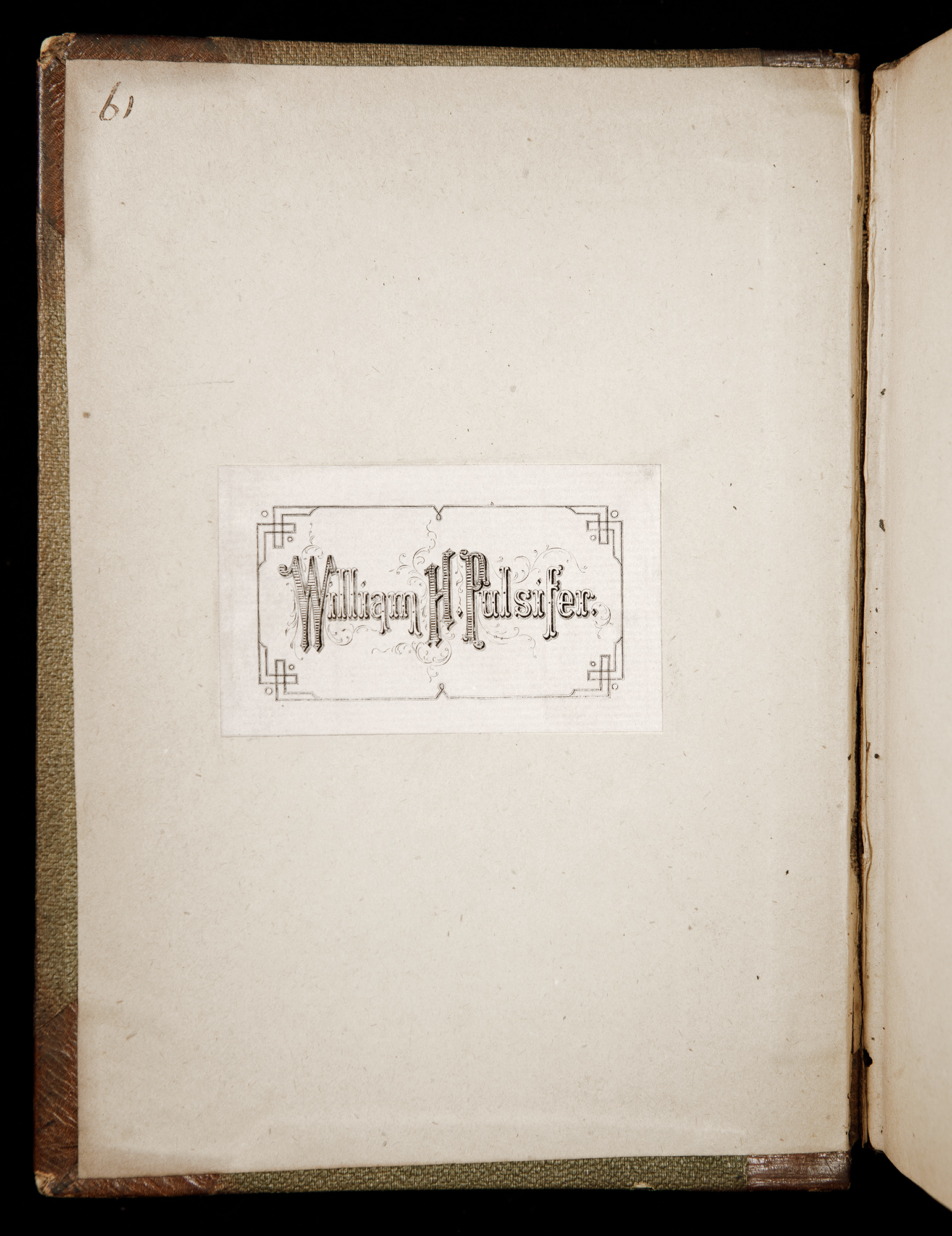
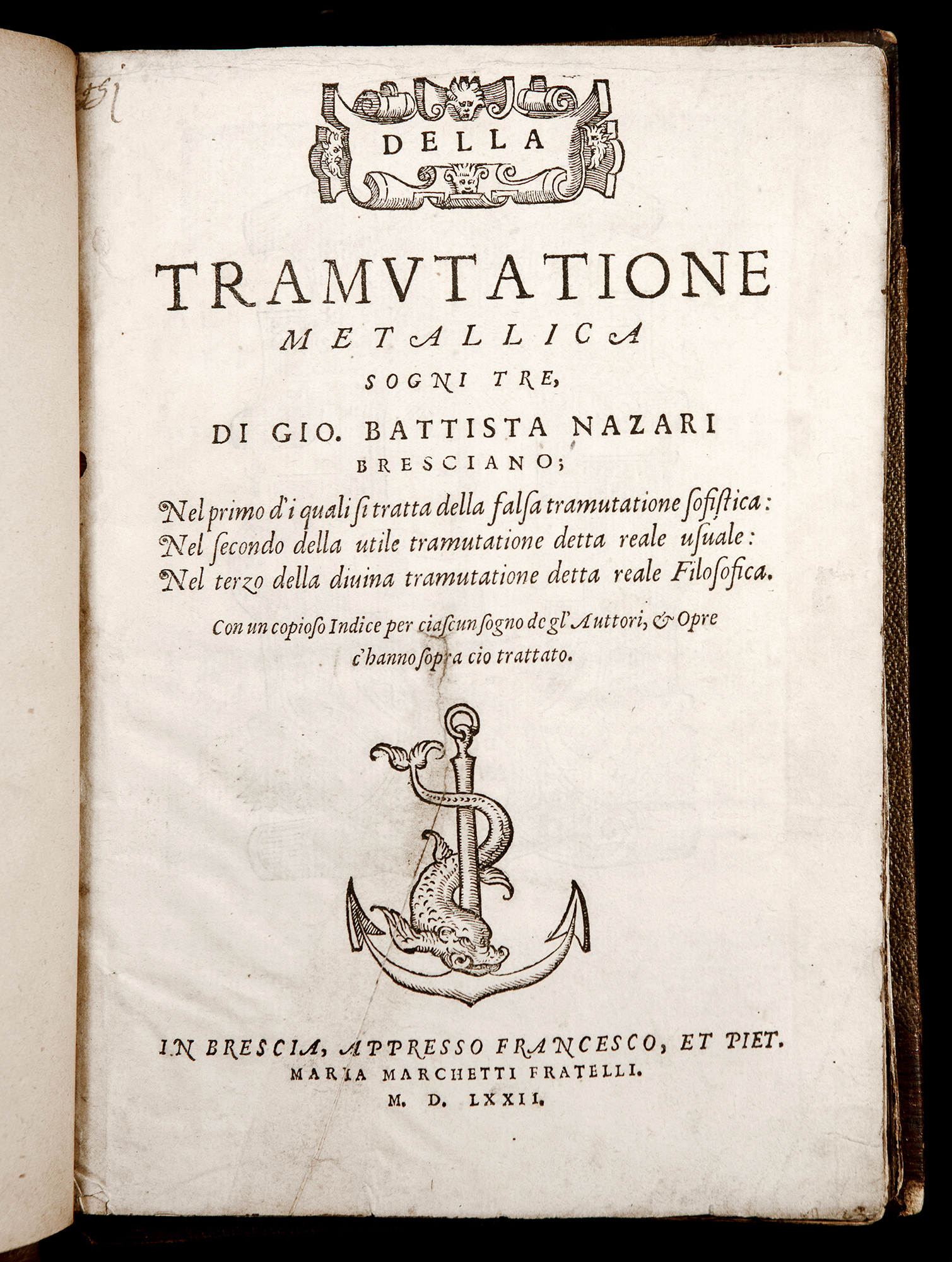
[Occult & Esoterica - Alchemy] [Early Woodcut Book Illustration - Italy]
NAZARI, GIOVANNI BATTISTA
Della tramutatione metallica sogni tre …
Brescia: Francesco & Pietro Maria Marchetti, 1572.
$5,400
Text in Italian (with some passages in Latin).
Second Edition and THE FIRST COMPLETE EDITION OF THIS EXTRAORDINARY ALCHEMICAL DREAM-NOVEL!
RARE! WorldCat locates only 7 copies in American libraries!
Giovanni Battista Nazari's fascinating "Three Dreams on Transmutation of Metals", with its enigmatic and strikingly bizarre woodcuts, is considered one of the key allegorical works of Renaissance alchemy.
Included at the end of this edition is an important alchemical poem in Italian by Rigino Danielli Iustinopolitano on the philosopher’s stone (Canzone de la Arte del Precioso Lapis de Filosofi) highly praised by the Italian alchemists of late 15th and 16th century. This edition is also significant for containing "an elaborate alphabetical alchemical bibliography by Nazari, which is considered the FIRST PRINTED BIBLIOGRAPHY OF ALCHEMICAL WRITINGS! Its extensiveness may be inferred from the fact that 10 titles are ascribed to Albertus Magnus, 20 to Arnald of Vallanova, 9 to Avicenna, 12 to Geber, 13 to Hermes, 9 to Rasis, and 70 to Raymond Lull" (L. Thorndike, History of Magic and Experimental Science, V, p. 625).
The 1564 first edition of Nazari’s work, entitled Il metamorfosi metallico et humano (a strikingly open admission that the alchemical process is not just about the transformation of metals but of the human practitioner, too!) contained only 2 dreams and only 2 woodcuts. This 1572 edition is considerably more rare than the 3rd edition printed in 1599.
In this arcane text Nazari recounts an extravagant initiatory journey in a sequence of three dreams. It takes its narrator/protagonist through hallucinatory images, allegorical landscapes and encounters with nymphs, monsters, madmen, and scholars in his search for the physical and spiritual secrets of alchemy. In his mystical quest he is guided by Bernard Trevisan, a distinguished (though probably mythical) 15th century Italian alchemist, towards a profound understanding of the alchemical truth.
The half-page woodcuts (repeated several times) depict Bernard Trevisan instructing the author and the author sleeping in the woods. The strikingly grotesque full-page woodcuts include Mercury with his hands and feet chopped off (presumably symbolizing its ”fixation”), monkey-like creatures dancing around an ass playing a flute, and a three-headed mercurial dragon with a human face at its stomach (believed to represent the "sophic Mercury, Sulfur, and Salt"). There are also two woodcuts forming a table of an alphabet of mysterious hieroglyphic symbols, as well as three simple full-page woodcuts depicting ancient columns with epigrammatic inscriptions in latin capitals.
Nazari’s Tramutatione is believed to have been influenced (both in its text and its illustrations) by the most famous Renaissance dream-novel Hypnerotomachia Poliphili (Aldus, 1499) displaying the same fascination for elaborate descriptive detail of architecture and landscape. C. G. Jung (who owned a copy of the 1599 edition) mentions this work in his Psychology & Alchemy (p.252) as one of the more elaborate specimens of the alchemical dream vision: "Nazari [...] puts his doctrine of transmutation in the form of three dreams, a fairly plain analogy to Poliphilo."
“The primary model for this work is an alchemical reinterpretation of the Hypnerotomachia Poliphili. The pilgrim-hero of Nazari’s story passes through forests, villages, lakes, tombs, gardens, labyrinths, arches, pyramids, places generally characterized by elaborate architectural constructions and decorated with statues and enigmatic inscriptions. He stops to look at ‘odd inventions’ and then ‘considers them and goes over them in his memory’. The reader is invited, even required, to do the same, as she/he turns the pages of the book and finds bizarre, hideous, and startling illustrations, such as a dragon with three heads, or an emasculated Mercury with no hands or feet, or a donkey playing a pipe surrounded by dancing monkeys” (L. Bolzoni, The Gallery of Memory, p.105)
"The First Dream showers us with images of futility and delusion. Our narrator falls asleep after his studies. He meets a lovely damsel, only to lose her in a crowd. He sees two doors, and follows the majority through the left one, where he finds the Fountain of Midas. He encounters the damsel's deceptive twin sister, a mutilated statue of Mercury (bearing verses in a simple substitution cipher), and a gigantic golden ass ringed by dancing monkeys. He passes through caves and villages filled with crazed alchemists, who rip apart their own bodies in their lust for gold; then emerges atop a mountain, where Bernard recounts his long years of fruitless experimentation. He is attacked by a bear, and awakes.
“The Second Dream turns to the practical techniques of metallurgy. Again, the narrator falls asleep; he sees an exquisite globe, then a monstrous personification of Sloth, followed by a retinue of grotesques. He rejoins the damsel, who reveals that her name is Royal Ordinary, and who summarizes her family history before again vanishing. He describes a wonderful arch, then meets Pan and Silvanus singing verses about perseverance. After crossing a river on a sumptuous boat, he meets a nymph; she outlines the properties of numerous rivers, lists eighteen useful alloys, and tells him where to mine various metals. He copies a long list of classical writers, then relaxes in a garden, where a group of nymphs treats him to a concert. Each of the eighteen alloys is then described in allegory, usually as the violent abuse of some mythological figure. Once again, he ends on a mountaintop, where Bernardo teaches him about the first matter and the properties of philosophical mercury and sulfur.
“The Third Dream veers into odder allegorical realms. Our Author again falls asleep; he again approaches the two doors, but this time chooses the right one. He escapes from a hydra, and enters a cave, where he sees a wonderful pyramid and an altar to Hermes. He meets a sphinx, whose riddles he answers with evasions. He enters a labyrinth; a damsel explains a marvelous tree in its center. She shows him an elaborate arch, and explains an even more complicated genealogical chart. He crosses a dangerous bridge, and describes a variety of emblematic statues and pedestals. He visits a cloister, where he copies out a lengthy alchemical bibliography. Another damsel takes him to a three-headed dragon, then to a glass vessel holding two nursing mothers. He ends up again before Bernard, who tells him a parable about a king and his fountain. This is interrupted by a violent storm, and he awakes." (summary by Doug Skinner, whose English translation of Nazari was published in the Magnum Opus Hermetic Sourceworks).
Physical description:
Quarto. Textblock measures 19 1/2 cm x 14 cm. Bound in 19th-century half-calf over olive-green boards; flat spine lettered in gilt.
Pagination: [8], 167, [7] pp.
Signature collation: *4 A-Y4 [-Y4 blank]
Complete, except for the rear blank.
Title page with a woodcut Aldine-like (anchor & dolphin) printer's device; an emblematic woodcut device of the author on verso of title: a sprout growing from a seed towards the Sun; around it is entwined a banner with the text "labore et fato", and below "dell' autore", all within an ornate frame. Numerous woodcut historiated initials of various sizes; several decorative woodcut head- and tail-pieces. Several full-page and half-page woodcut illustrations in text. Text printed in single column, mainly in italic type.
Preliminaries include the Nazari’s dedicatory epistle (dated 8 July 1572) to Vespasien Gribaldi, Archbishop of Vienne in southeastern France, and two short laudatory poems on Nazari and his work.
Nazari's bibliography of alchemical works occupies pp.135-144. Included at the end is a long poem by Rigino Danielle on the Philosopher's Stone (pp. 159-167), followed by a detailed table of contents "Tavola de Capitoli" (leaves Y1r-Y2v), Errata ("Errori piu Importanti..." on Y3r), and a colophon on Y3v.
Provenance:
With an ex-libris bookplate of a 19th-century American owner, William H. Pulsifer of St. Louis, MO, a prominent member of St Louis Academy of Science, co-founder in 1887 of St Louis Museum of Arts and Sciences, and the author of a substantial monograph ‘Notes for a History of Lead’ (New York, 1888).
Condition:
Very Good antiquarian condition. Binding rubbed, partly faded; wear edges and joints; ends of spine slightly chipped with minor loss of leather. Title-page with a repaired closed tear, and outer margin neatly restored (all without any loss of text or device). Internally with some marginal soiling and occasional light marginal water-staining; some leaves with light to moderate browning. In all, a solid clean, well-margined example of this rare, enigmatic work.
Bibliographic references:
Mellon 44; Caillet 7937; BM STC Italian 463; Honeyman 2295; Dorbon-Aîné, Bibliotheca Esoterica 3232; Ferguson II:131-2.
